I’m coming in a bit late with this recipe that I had promised to share before Christmas, but better late than never, so here it is in time for you to make it for New Year’s Eve or for New Year’s Day!
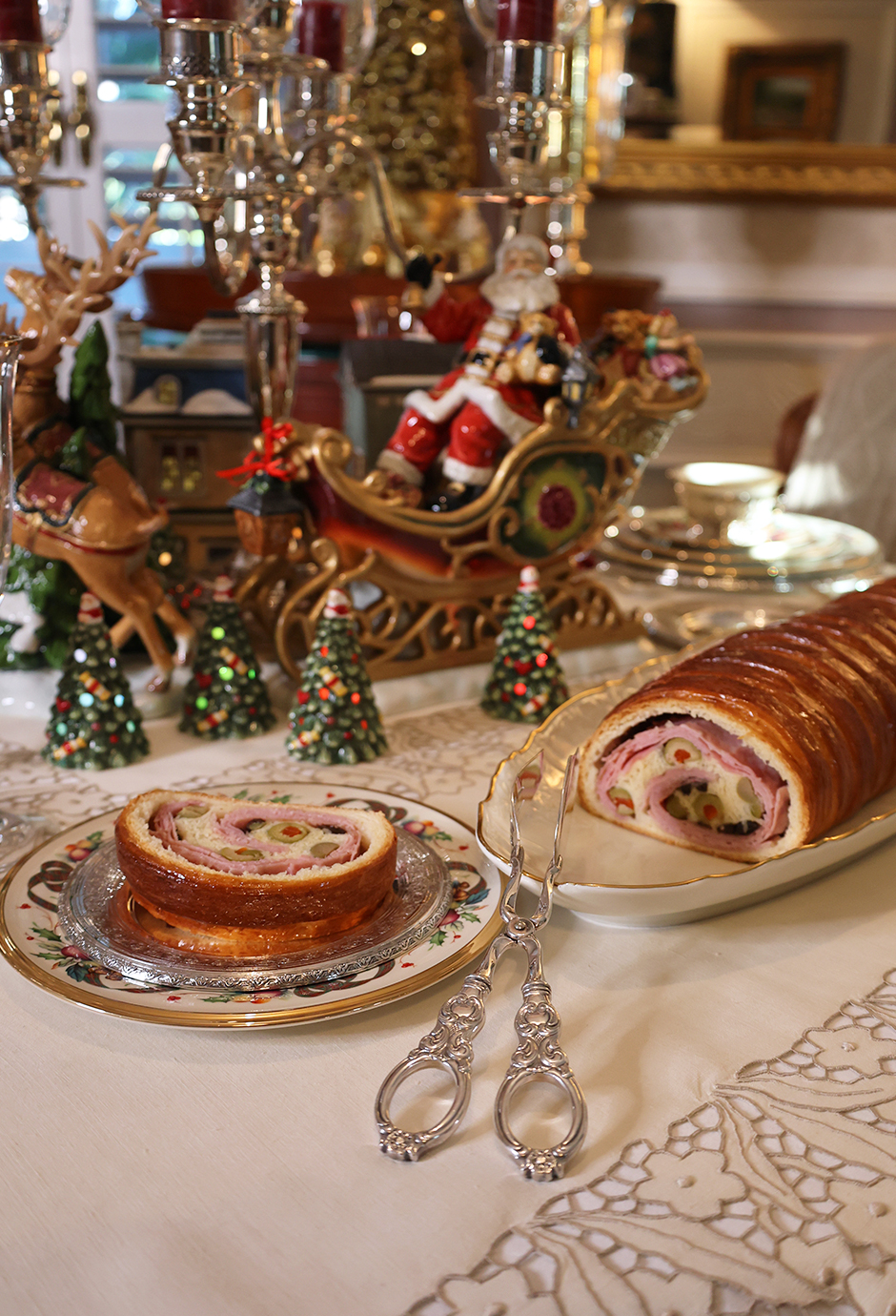
This bread is typical of Christmas in Venezuela. In my house, we begin to make it on Thanksgiving, and don’t stop until Three Kings Day, on January 6th. It is a festive, enriched, brioche-y bread that perfectly balances sweet and salty.
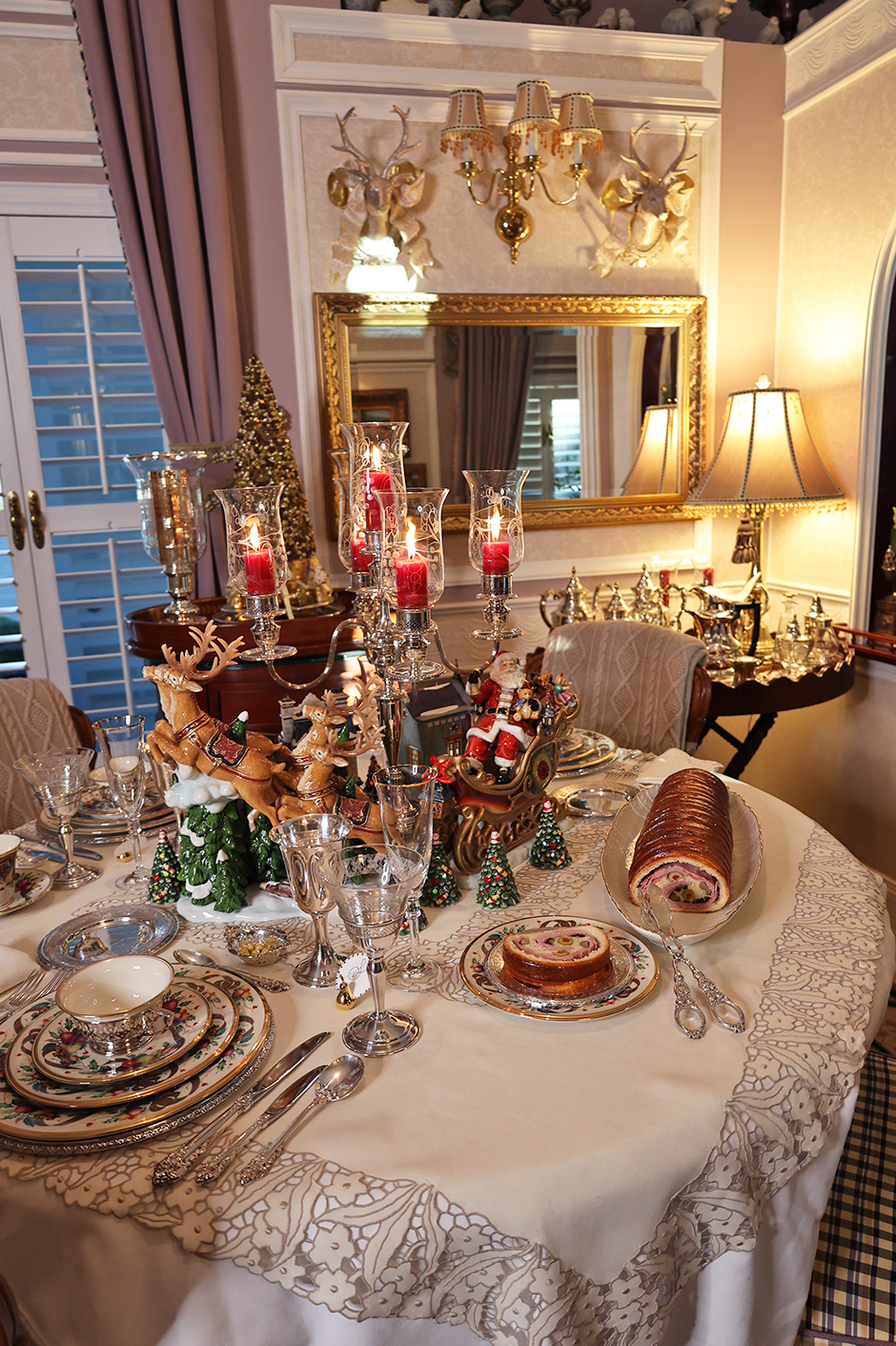
Although it is a well-loved tradition, this bread is not particularly old. The tradition actually started in 1905, and was the invention of Lucas Ramella, owner of the Ramella Bakery in Caracas, who named it Pan CON Jamón. There are many versions as to why he came up with this concoction, but trusting Miro Popic, a gastronomical authority in Venezuela, it seems like the invention provided a way to use the leftover shavings of ham; those shaved pieces that were closer to the bone and would not sell otherwise.
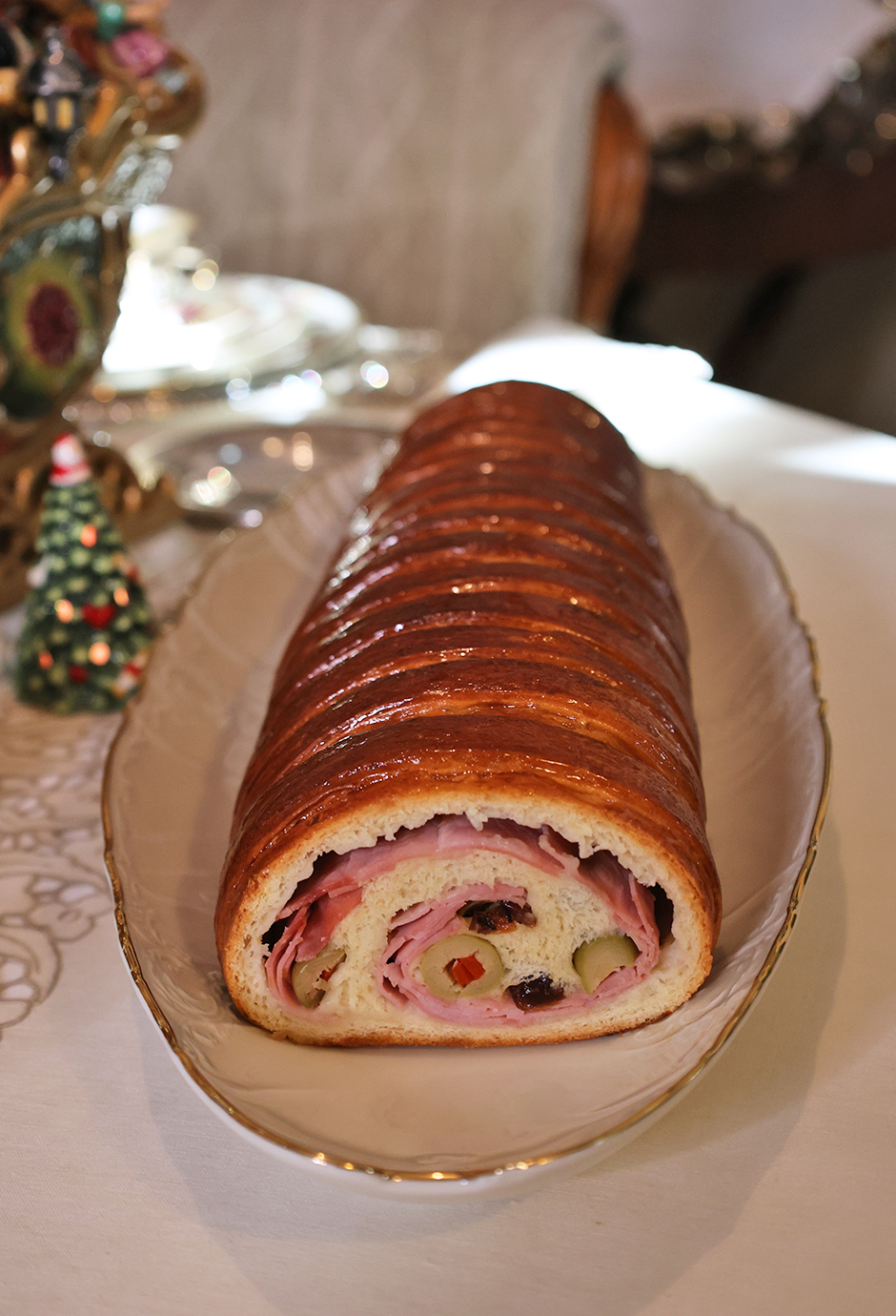
The popularity of this bread roll grew all over the city, and by the 1920s, many other local bakeries had added their own flair, incorporating raisins, pimento-stuffed olives, and even walnuts or almonds. By then, the name that had stuck was Pan DE Jamón; the name by which it is now known. By the 1940s, the new, York-style, “pressed” ham (as opposed to the traditional whole, baked ham that each person had to slice in their home), made its appearance, and the convenience of using same size and thickness slices, replaced the original shavings that had given birth to the bread.
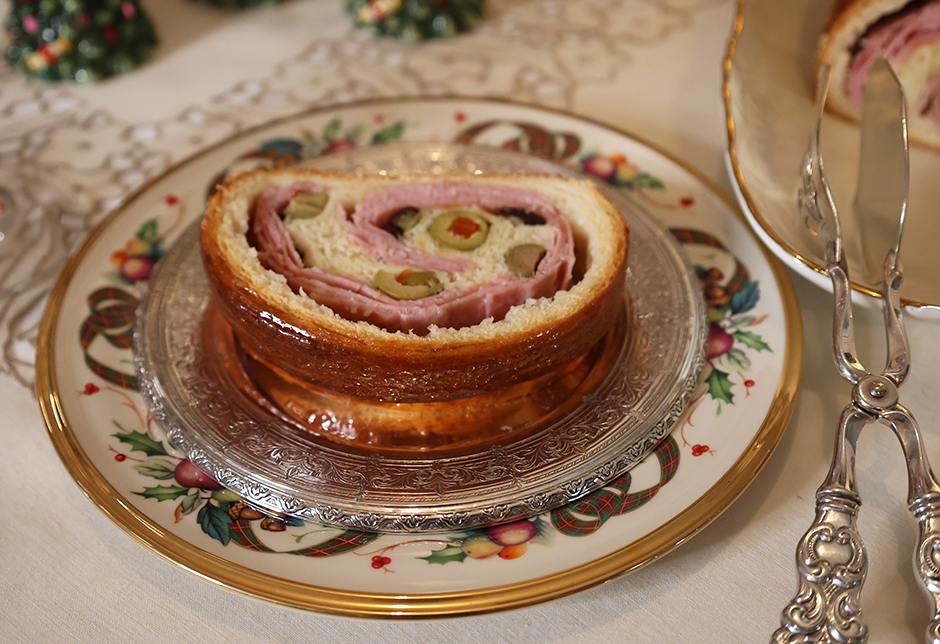
Unlike many other culinary creations, which evolve out of new interpretations of old recipes common to many countries, the Pan de Jamón is purely Venezuelan, and does not exist in the culinary repertory of any other country. It is loved and enjoyed by all who taste it, and constitutes a truly festive way to eat a “pick me up” in between meals during the Christmas season. Technically, it accompanies the Christmas meal (hallacas) but in reality, you can eat it all day! In my house, we love to eat it at breakfast too, accompanying scrambled eggs and tomatoes. It is superb with tomato-anything, so pairing it with tomato bisque, for example, as I did for my Christmas Eve dinner (here), is perfection!
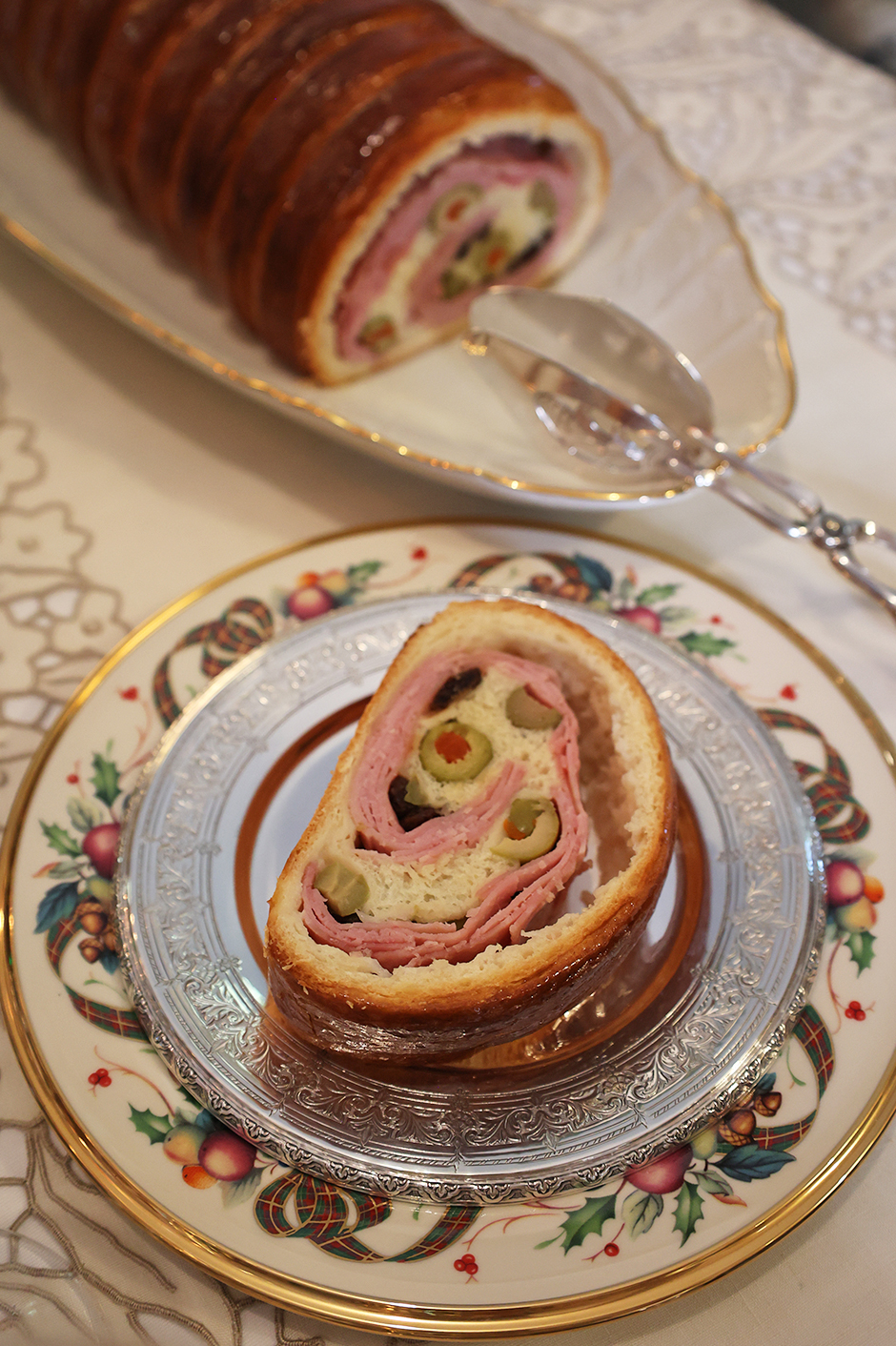
The bread itself is not hard to make. It requires patience and waiting time, but the feeling of accomplishment once you finish it is well worth it! Of course, you will need practice, particularly if you are new to baking bread, but I have tried to give you as detailed-as-possible instructions for success, so I’m confident in the results. Let’s go! You’ve got this!
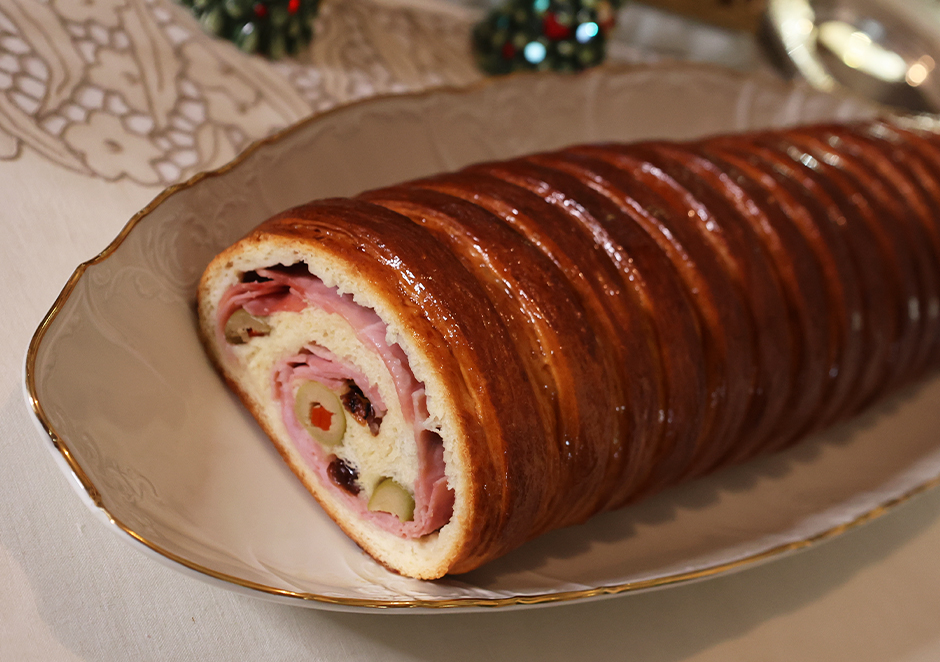
As you will see, I have broken down the recipe in steps, following the process as it goes. That way it won’t overwhelm you! Also, remember that this is my version of it (well, really, my grandma’s and mom’s version–both of whom lived in Venezuela for many years–with my tweaks), so you may want to add your own flair.
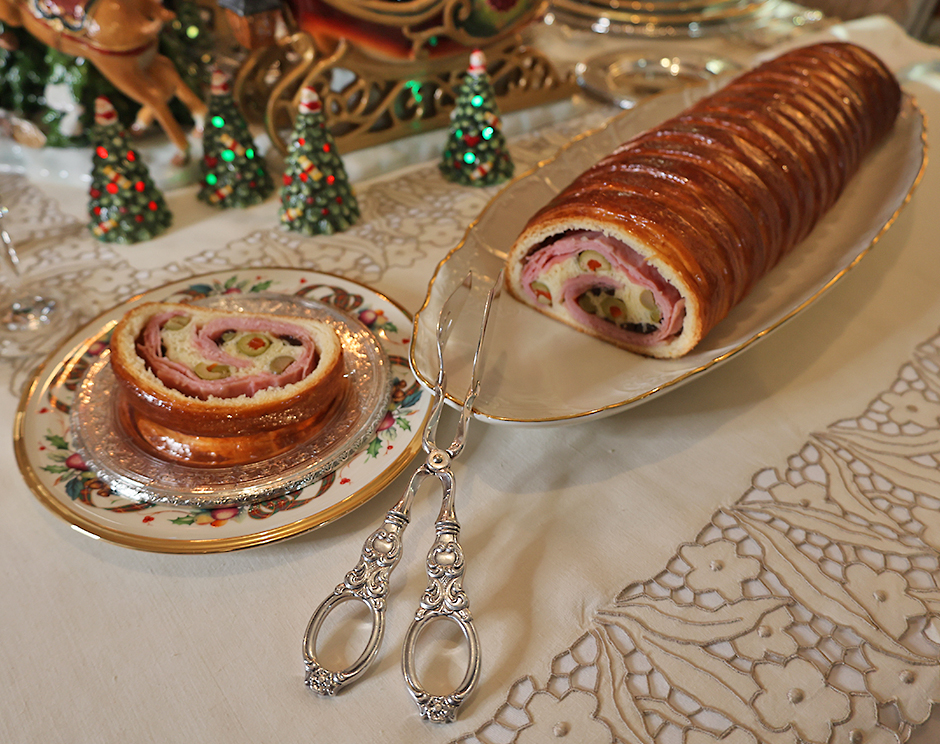
The most well-known version uses whole slices of ham, but I prefer to cut up my ham to mimic the old fashioned shavings. I have tried it both ways, and prefer my way. Also, most modern versions include bacon. Although I love bacon, I don’t like it in this bread, so I omit it, as I think it overpowers the flavors in many cases. The addition of walnuts or almonds has been left behind, and I, personally, have never seen a Pan de Jamón with them, but you may want to revive that option. Raisins and pimento-stuffed olives are standard, but the proportions may be altered to your taste. I would recommend not omiting them, since they are key to the sweet-salty-briny flavor that is so characteristic and prized in this bread. You may even use regular un-stuffed olives, which was also common when my mom was little. Also, feel free to use any kind of ham. I use Boar’s Head Branded Deluxe in mine, which is a pretty mild ham. In Spain, I may use lacon shavings, for example, as long as they are not too salty. If you are Jewish, or if you want to add a Thanksgiving twist, you may want to substitute the ham for turkey breast (and turkey bacon also!), and it is equally delicious!
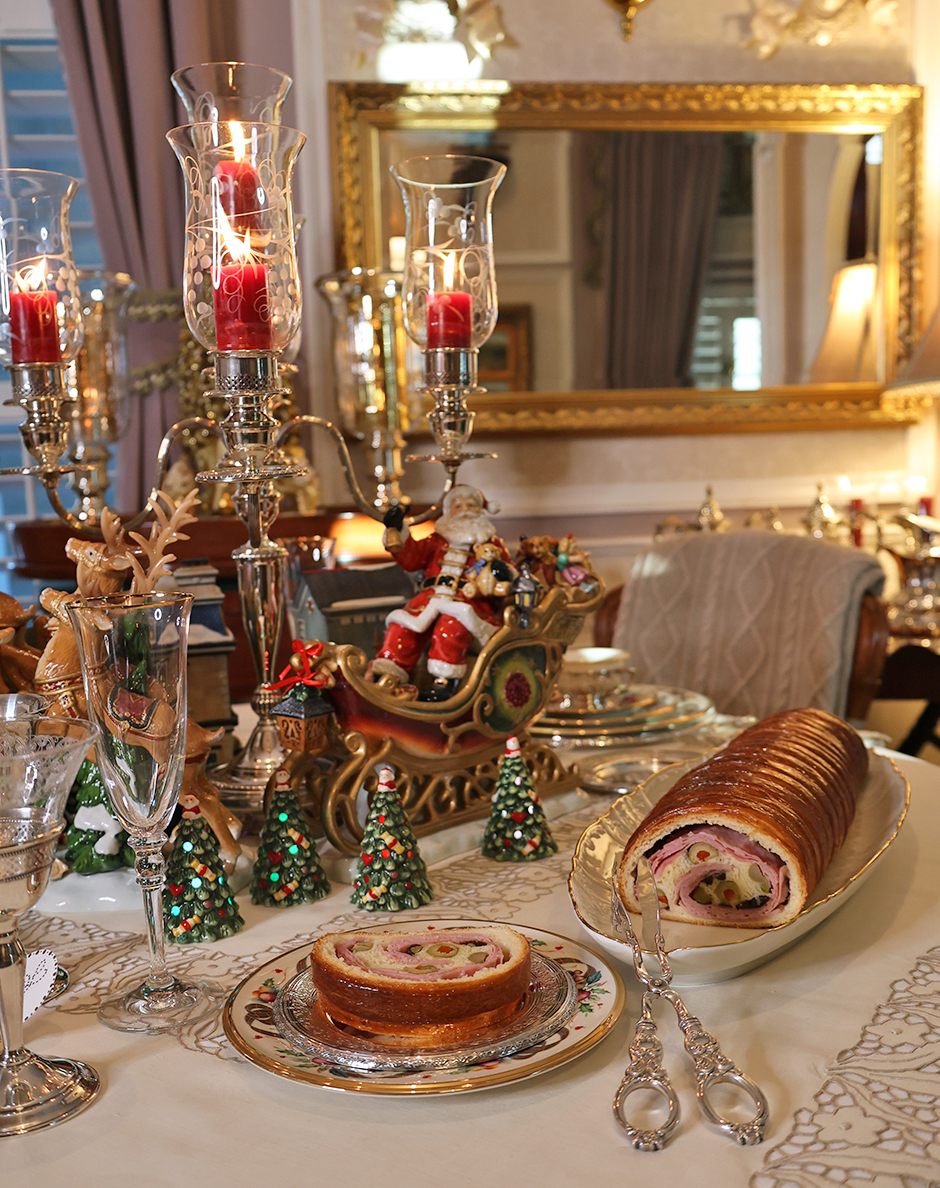
Again, I would make it once with my recipe, and then, see how you may want to alter it to your own preference. If you decide to make it, do share the results, and if you are in Instagram, tag me to see your creations! I will love to see them!
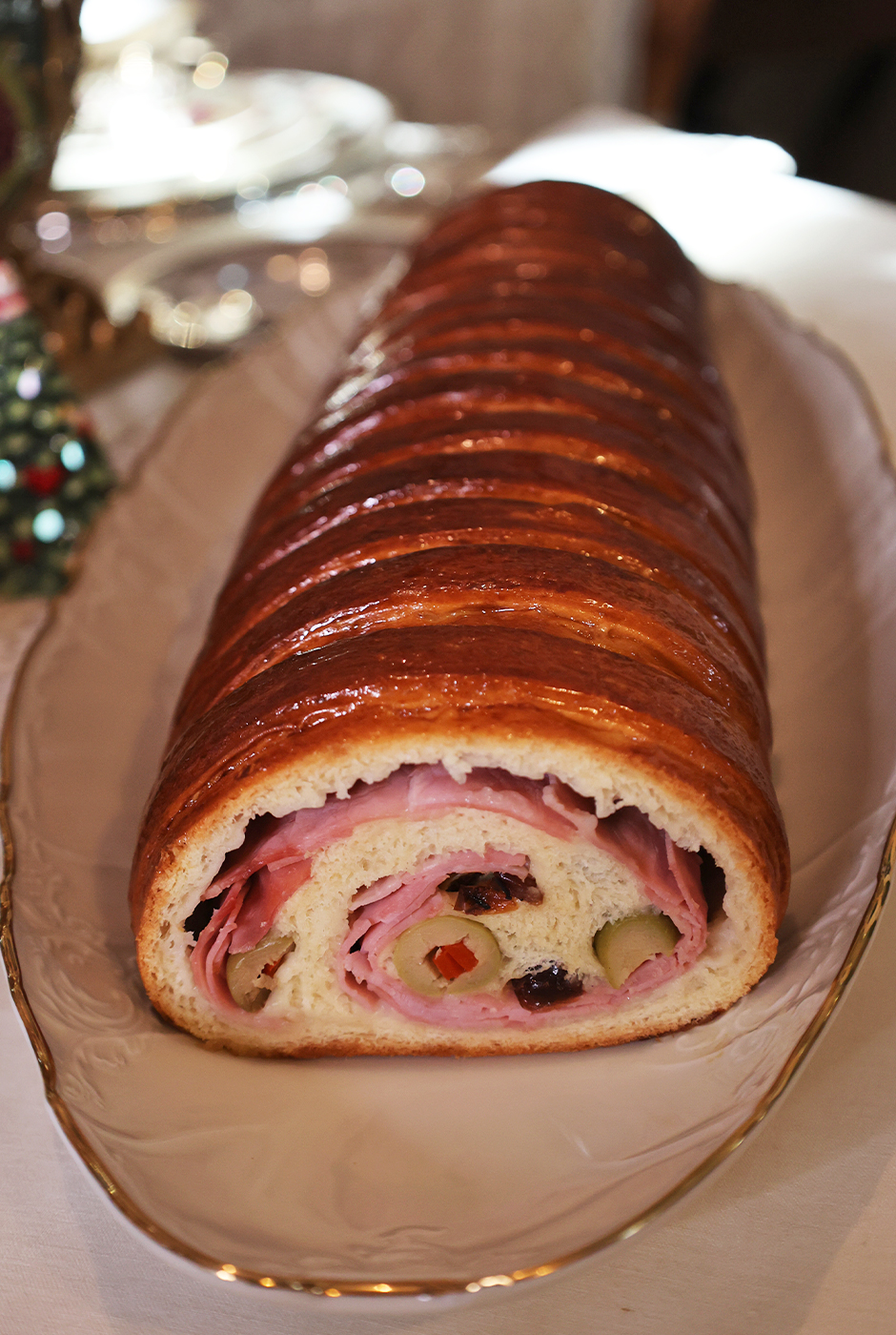
Before starting the recipe, prepare the ingredients for the filling (see below). Start the steps as follows:
Ingredients & Steps
- 1 cup of warm milk (250 ml)
- 2 ½ teaspoons instant dry yeast (I have not used fresh yeast with this, but it works too, provided that you make the correct adjustments for fresh yeast)
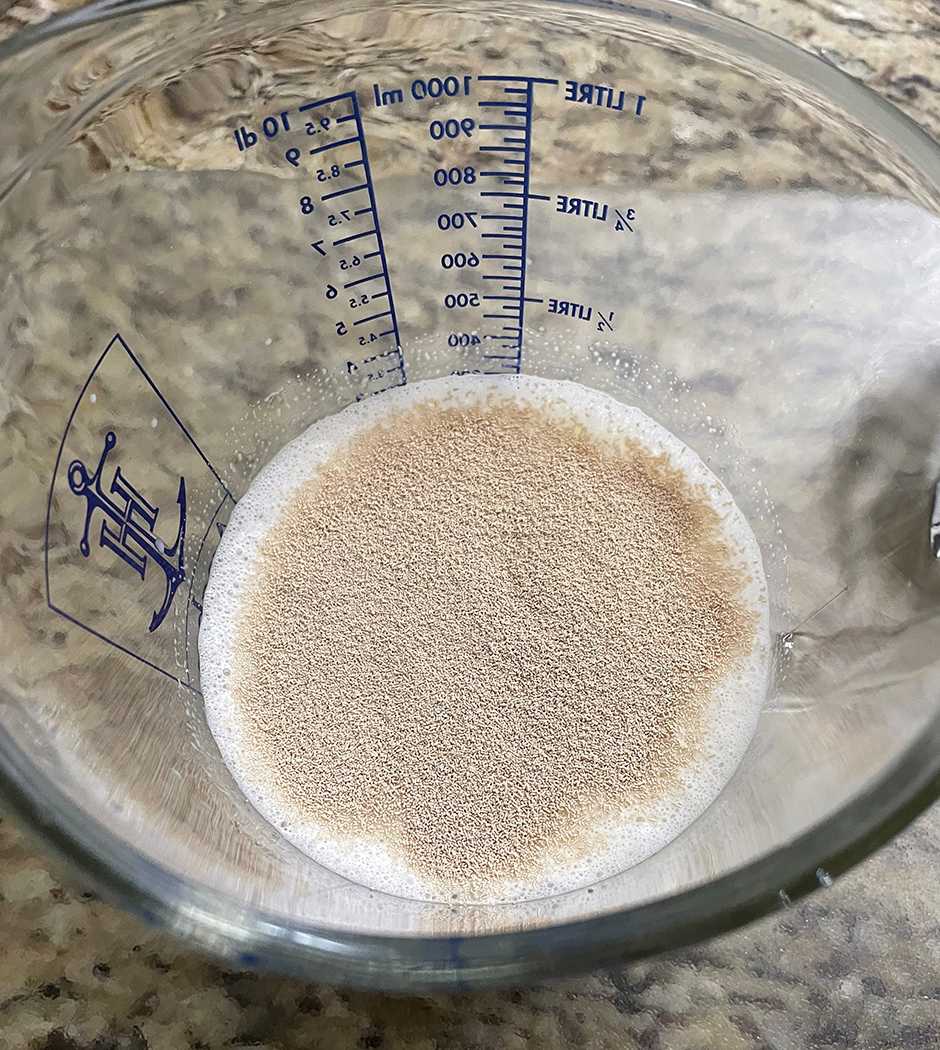
Whisk all ingredients and wait 10-15 minutes until foamy.
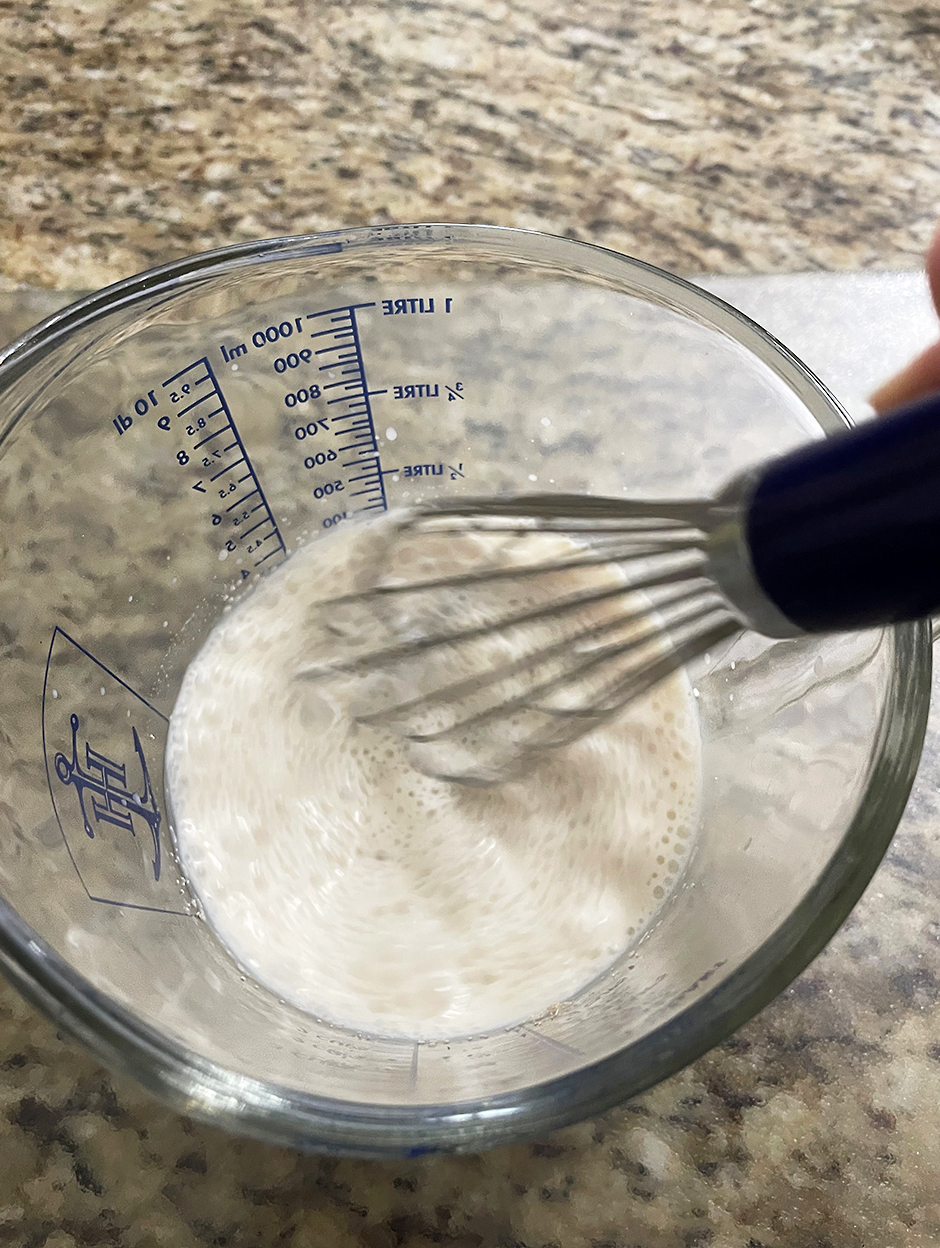
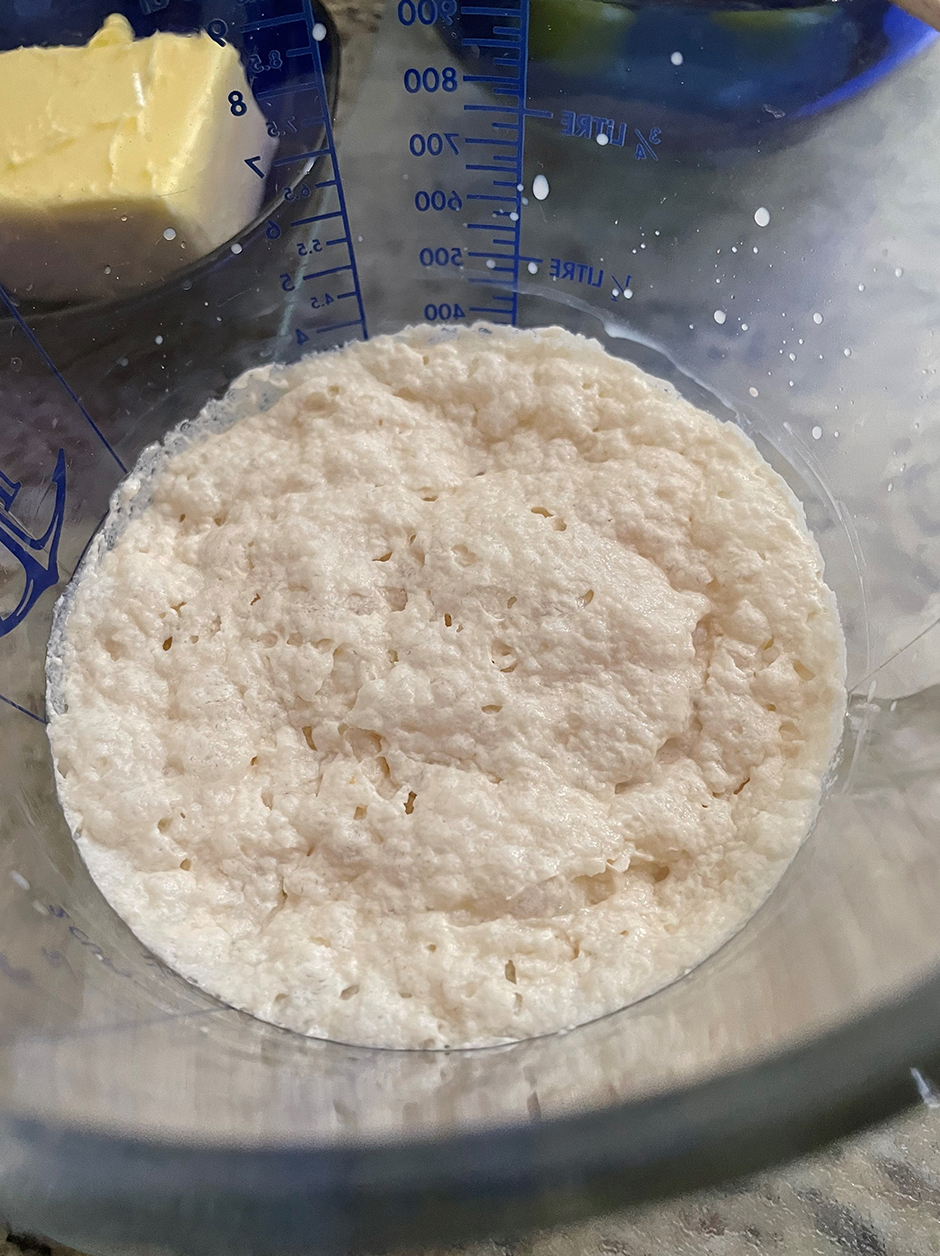
Now add:
3 beaten eggs.
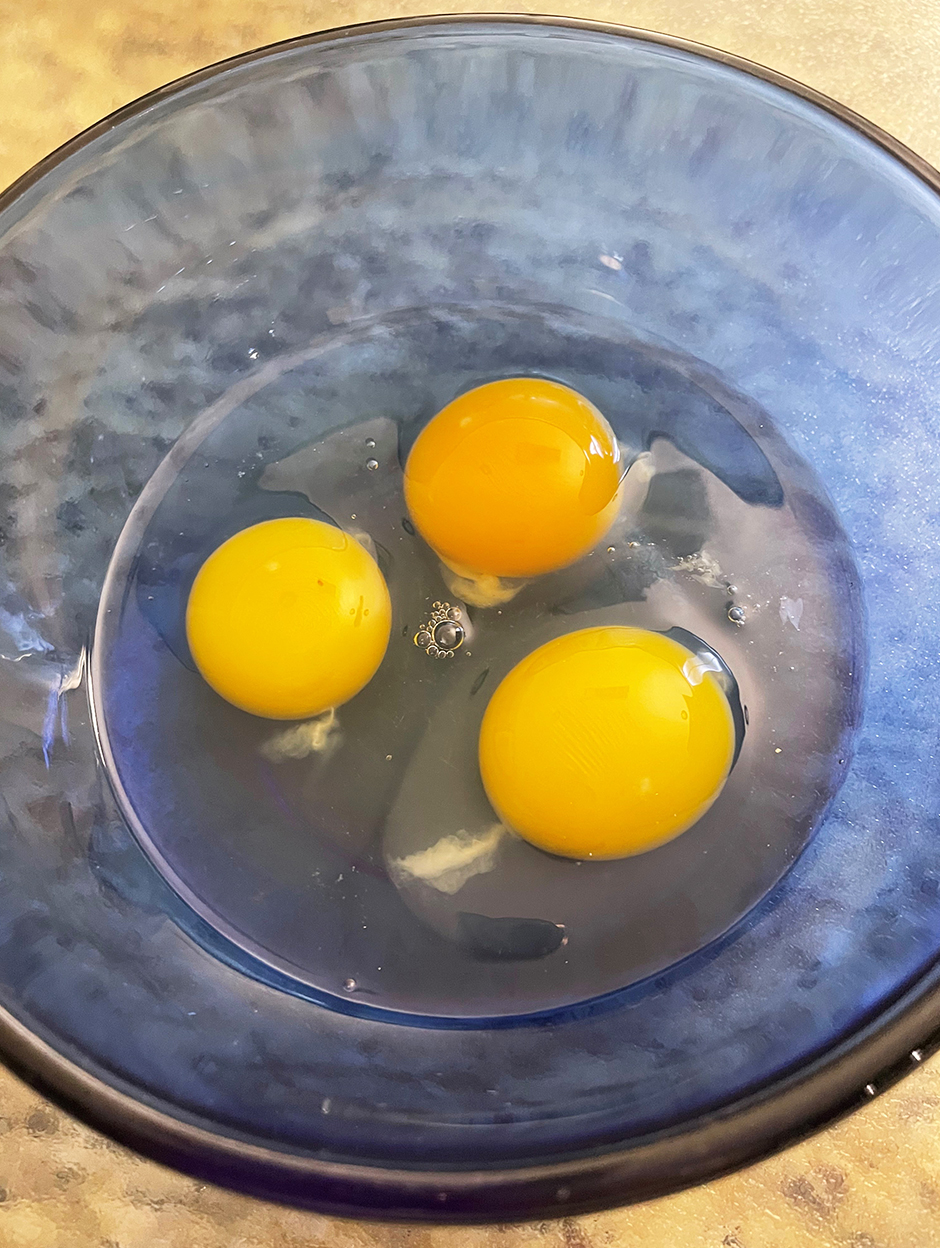
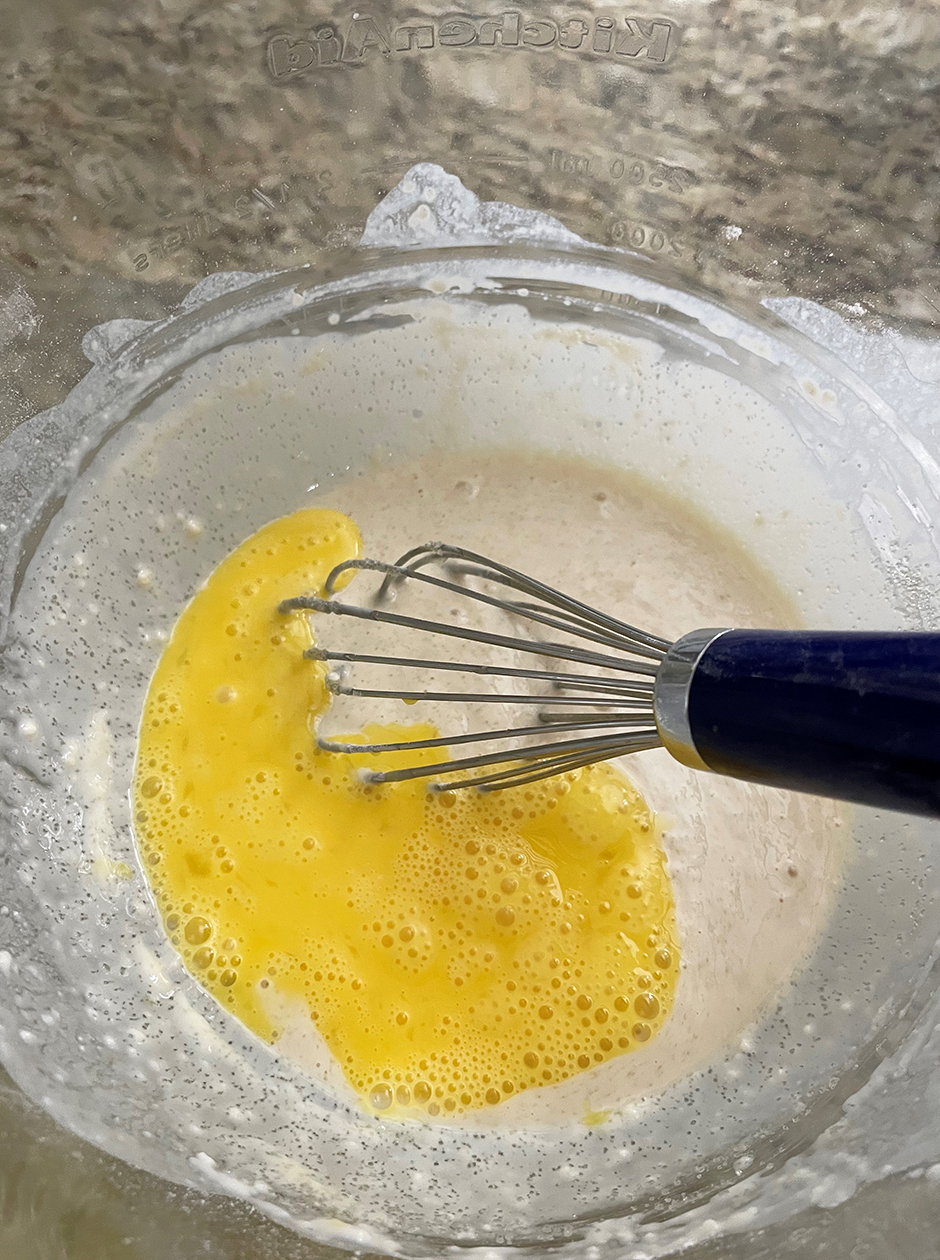
4 teaspoons sugar.
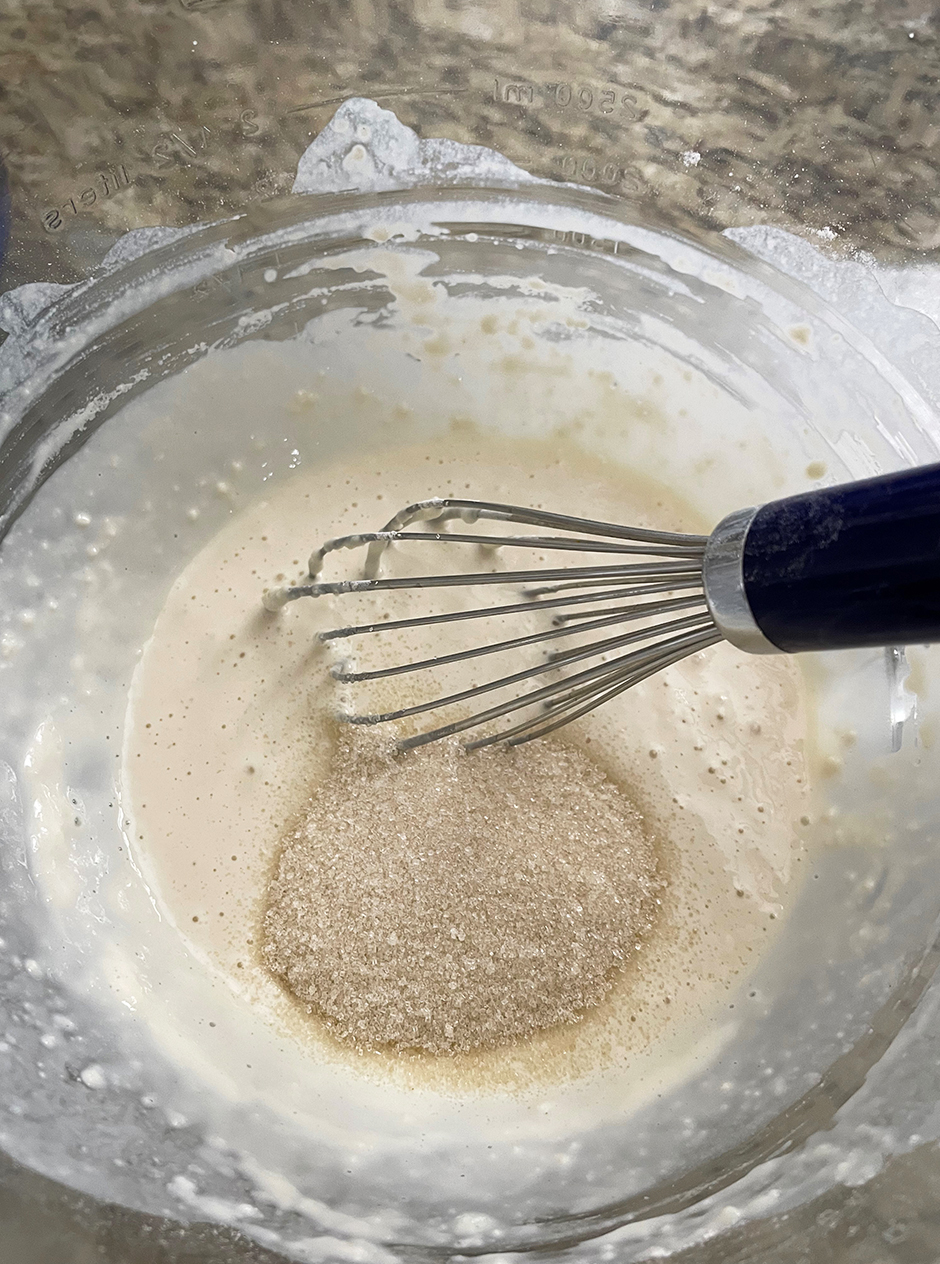
1 cup (150 gr) bread flour (You can use regular, all purpose, but I prefer bread flour)
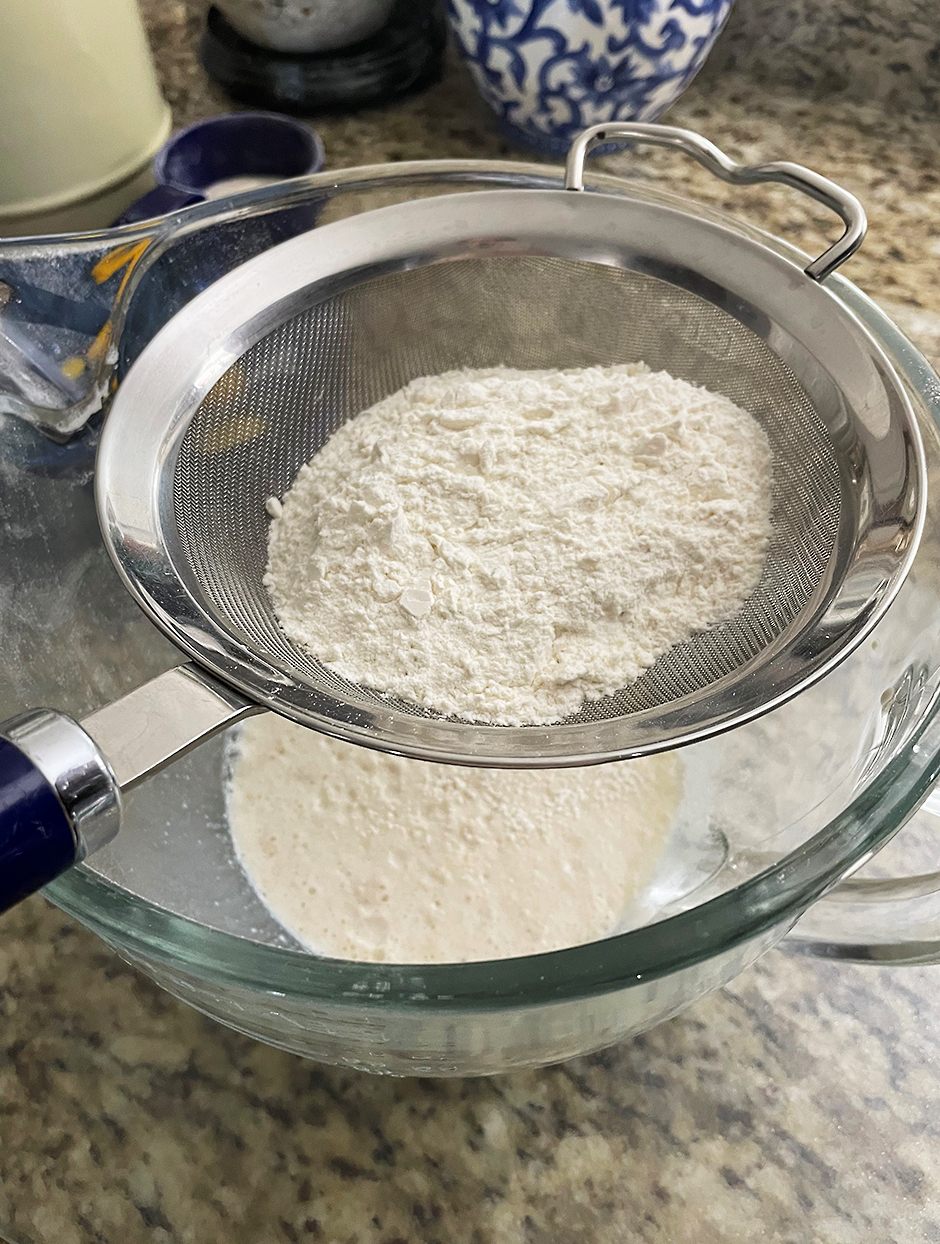
Sift flour, add eggs and sugar to the yeast mix, and whisk until smooth. Wait about 35-40 minutes until starter doubles in size, covered, in proof oven or in a warm place.
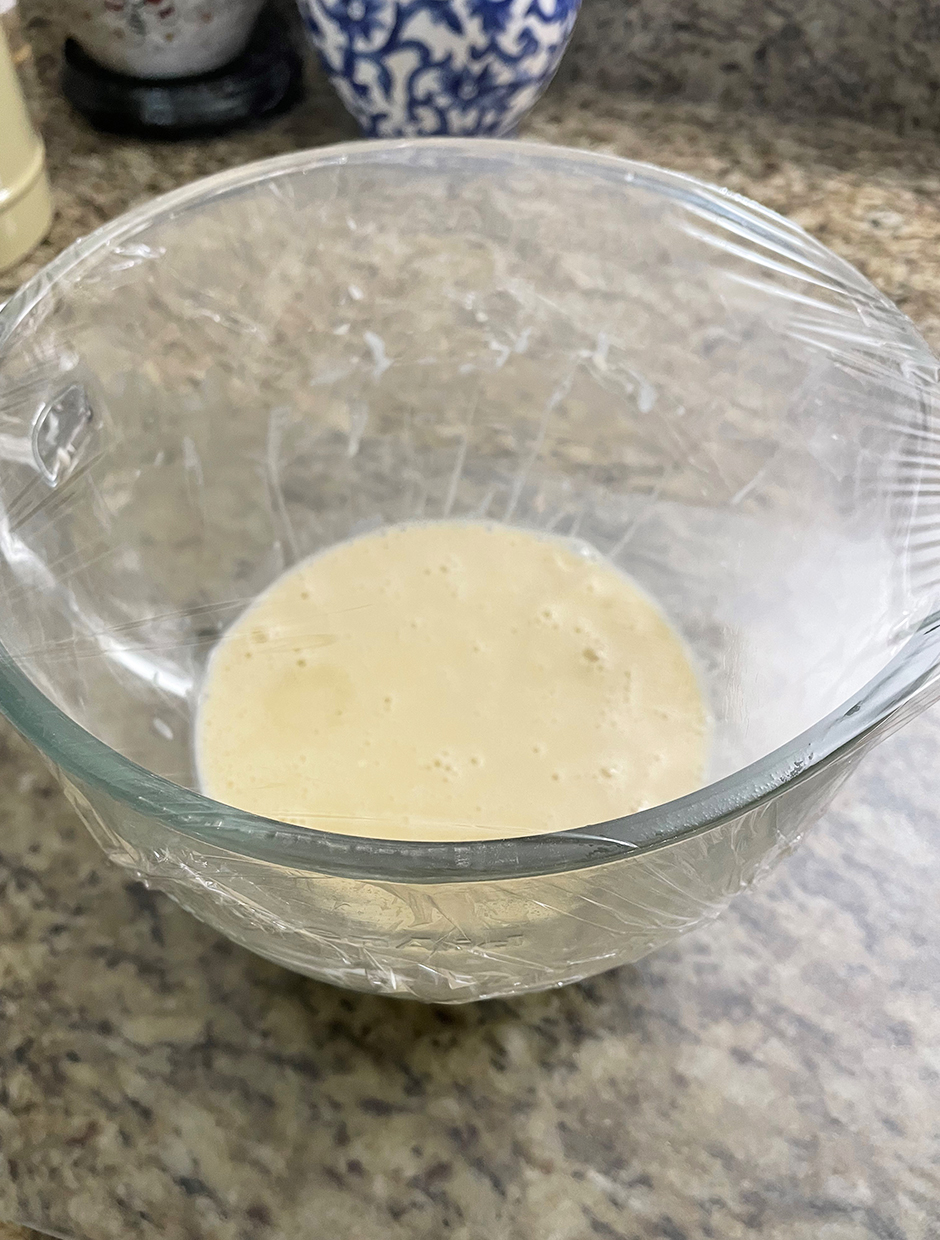
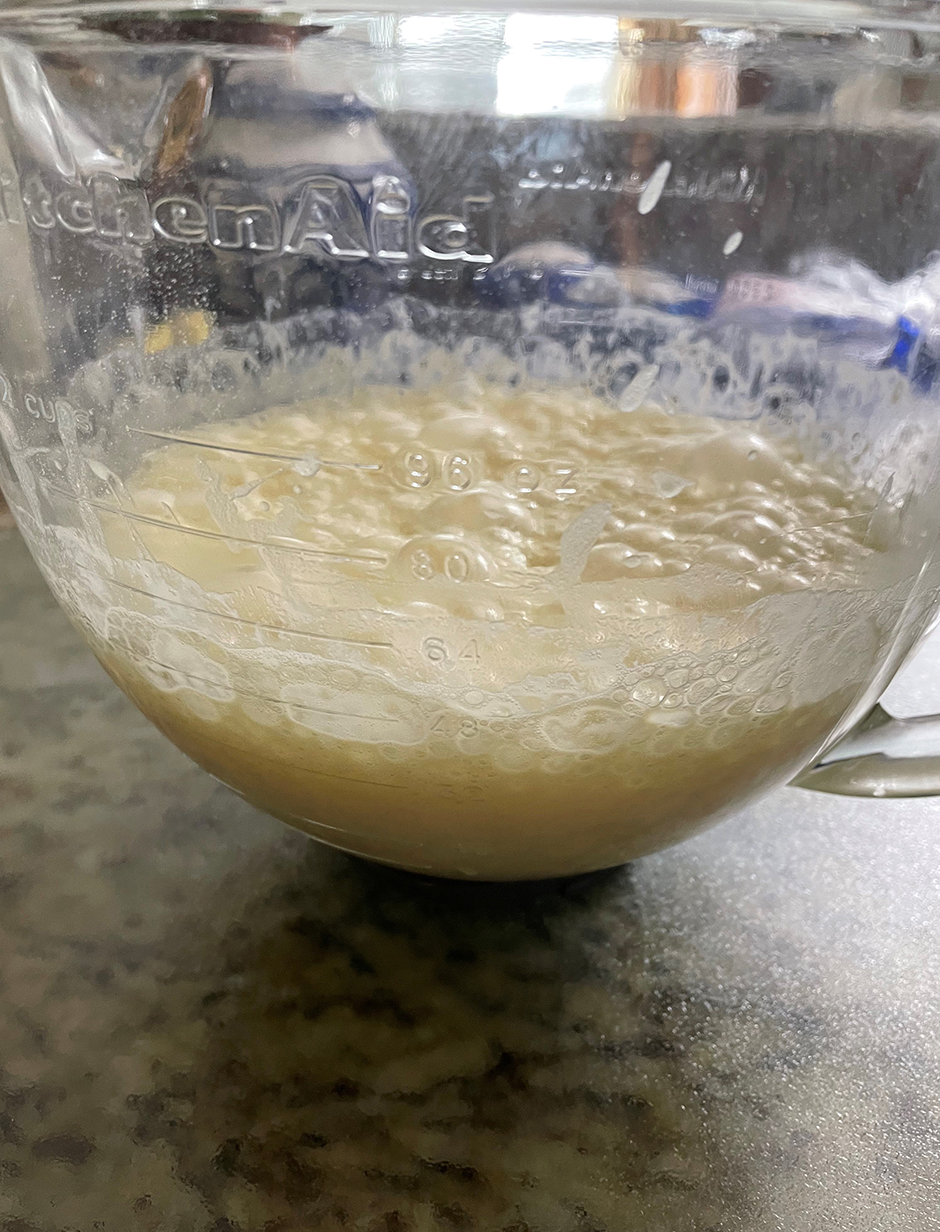
Now add:
- 3 1/2 cups (500 gr) of sifted bread flour (You can use regular, all purpose, but I prefer bread flour)
- 1 teaspoon salt
- 100 gr of softened butter (NOT melted!)
Mix with dough hook for about 7-8 minutes until it separates from bowl. It needs to be knead for 7 to 8 minutes to allow the gluten to develop. You may need to hold your mixer down because the dough is strong! Finish by hand, if needed, on lightly floured surface. The dough will not stick to your fingers.
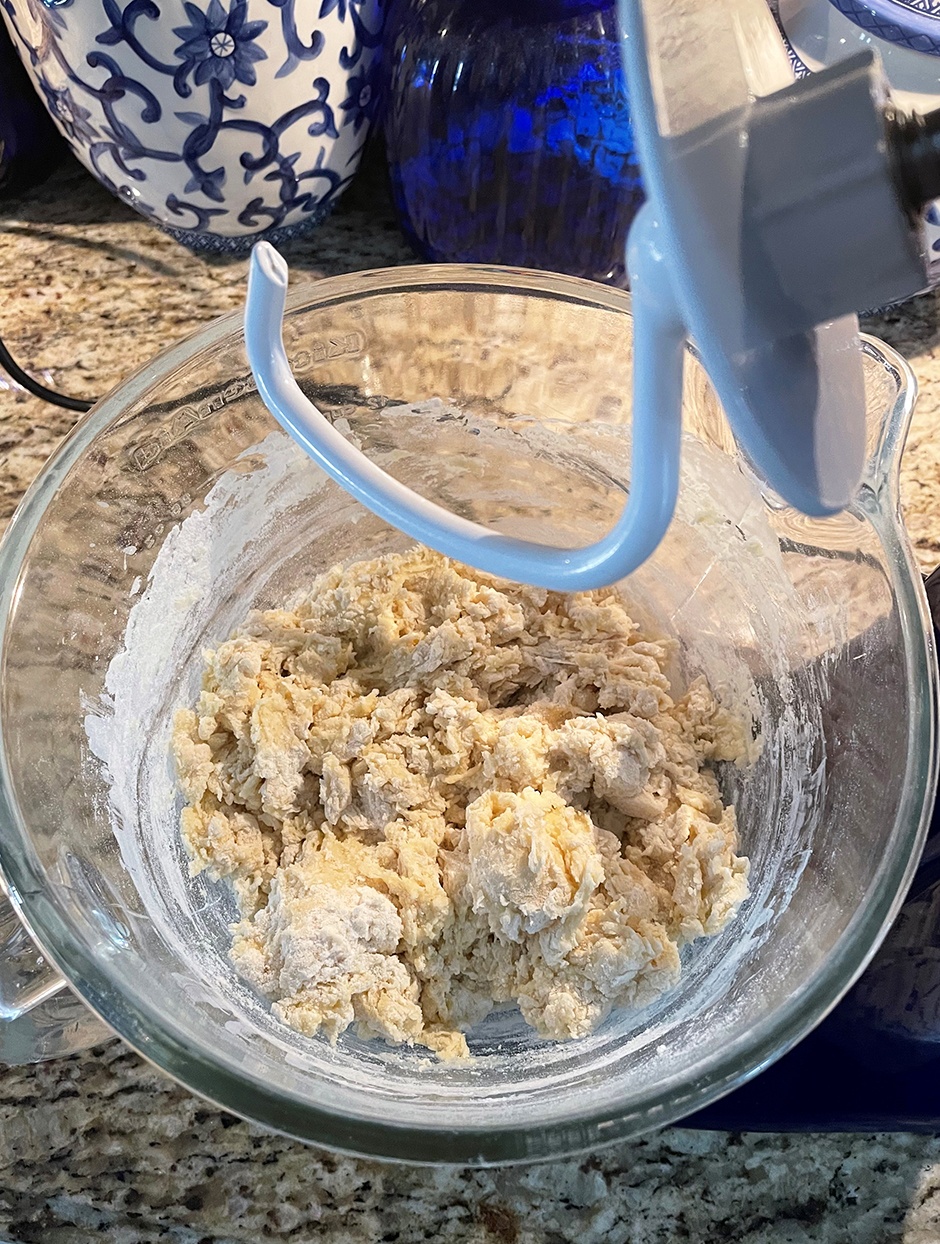
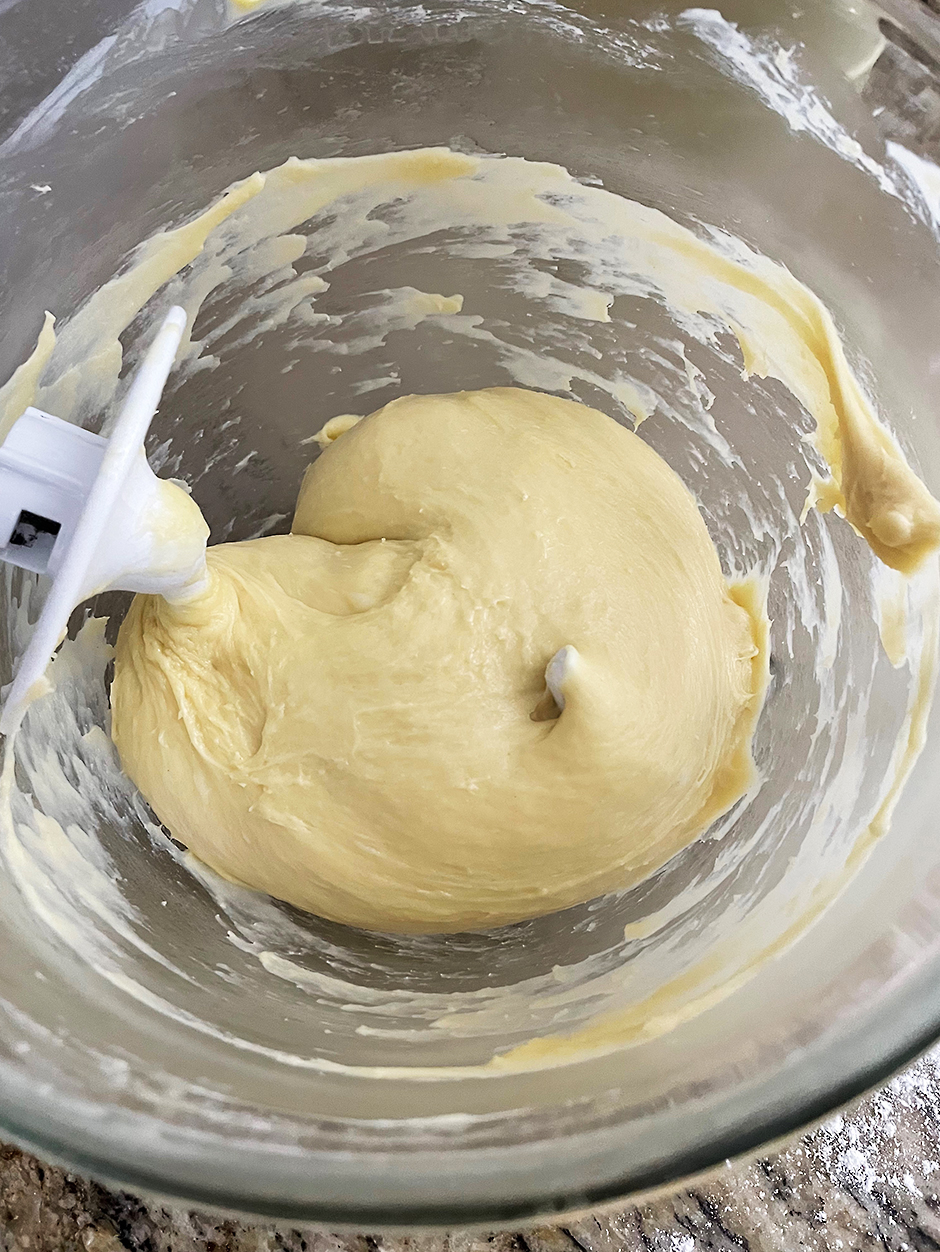
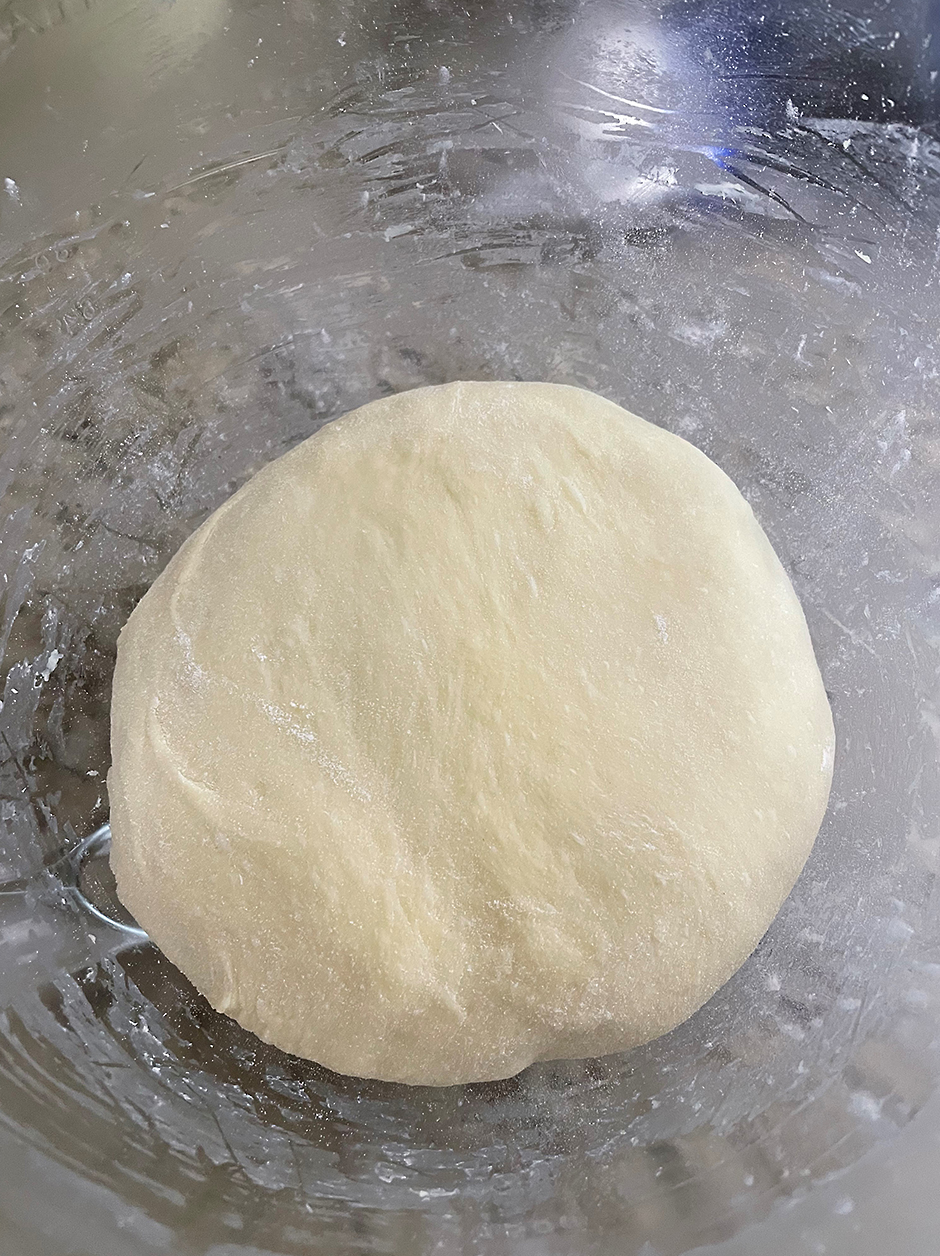
Cover and wait about 30-45 minutes until it doubles in size in a proof oven or in a warm place.
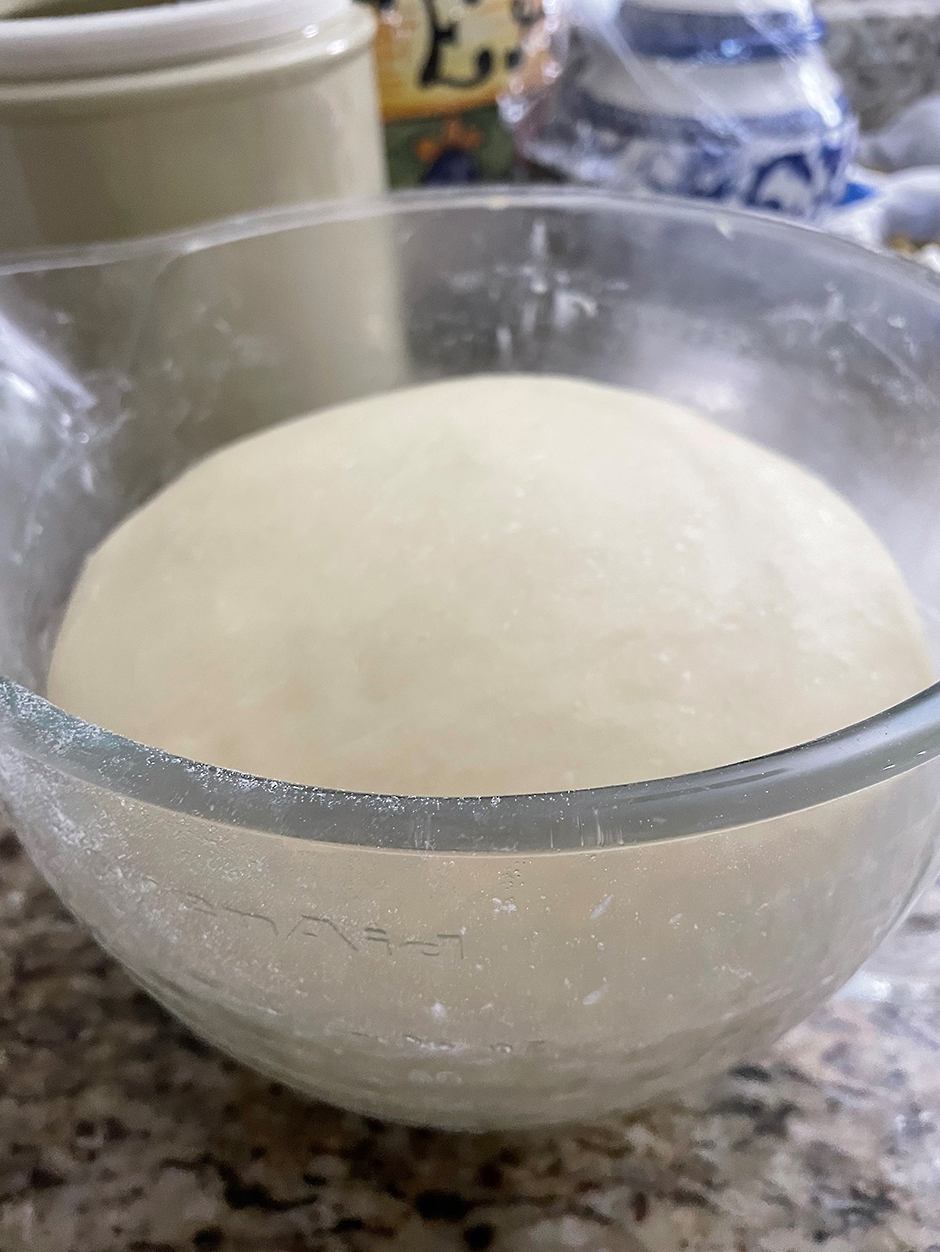
Deflate and cut in half to form 2 medium loaves.
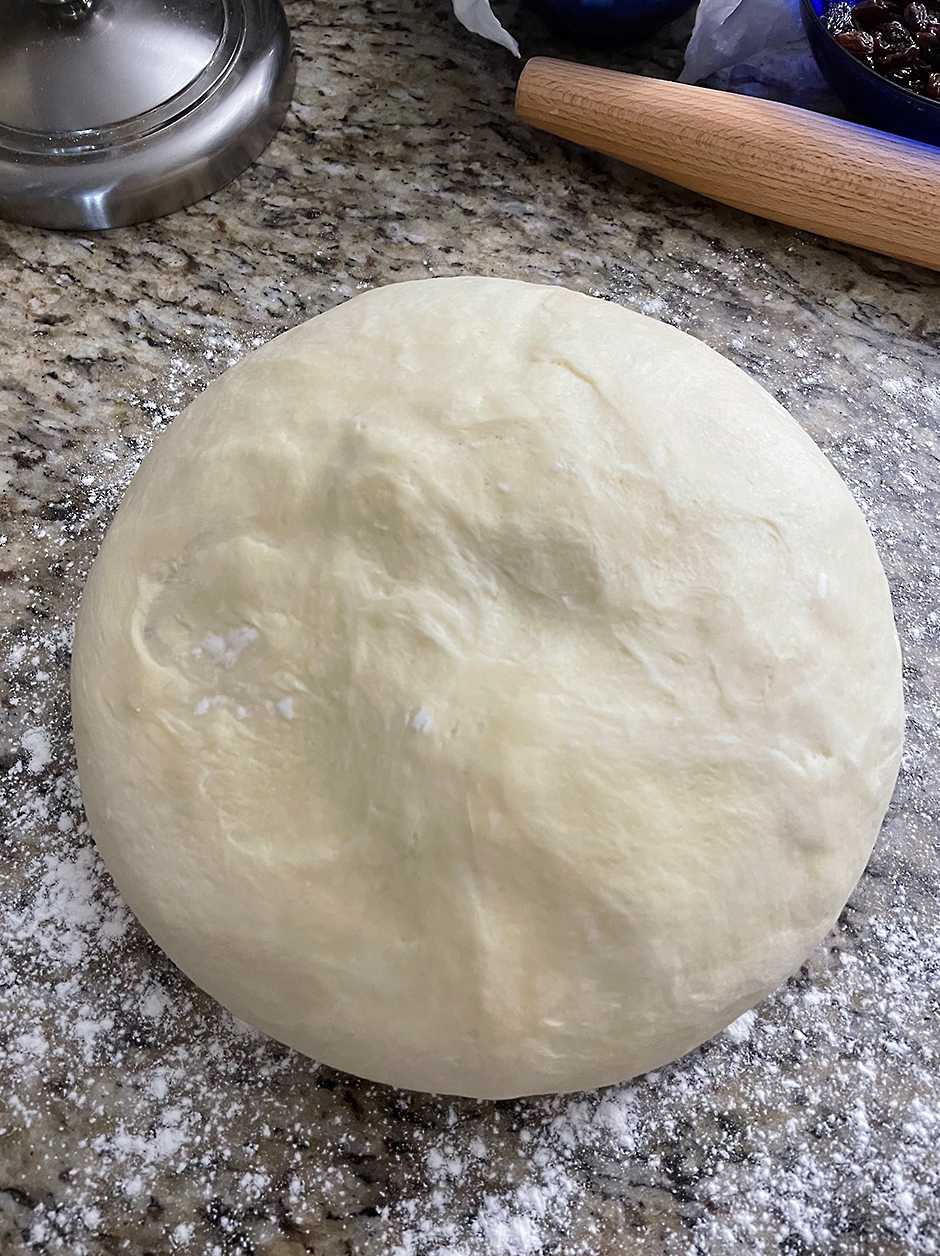
Roll each into a rectangle.
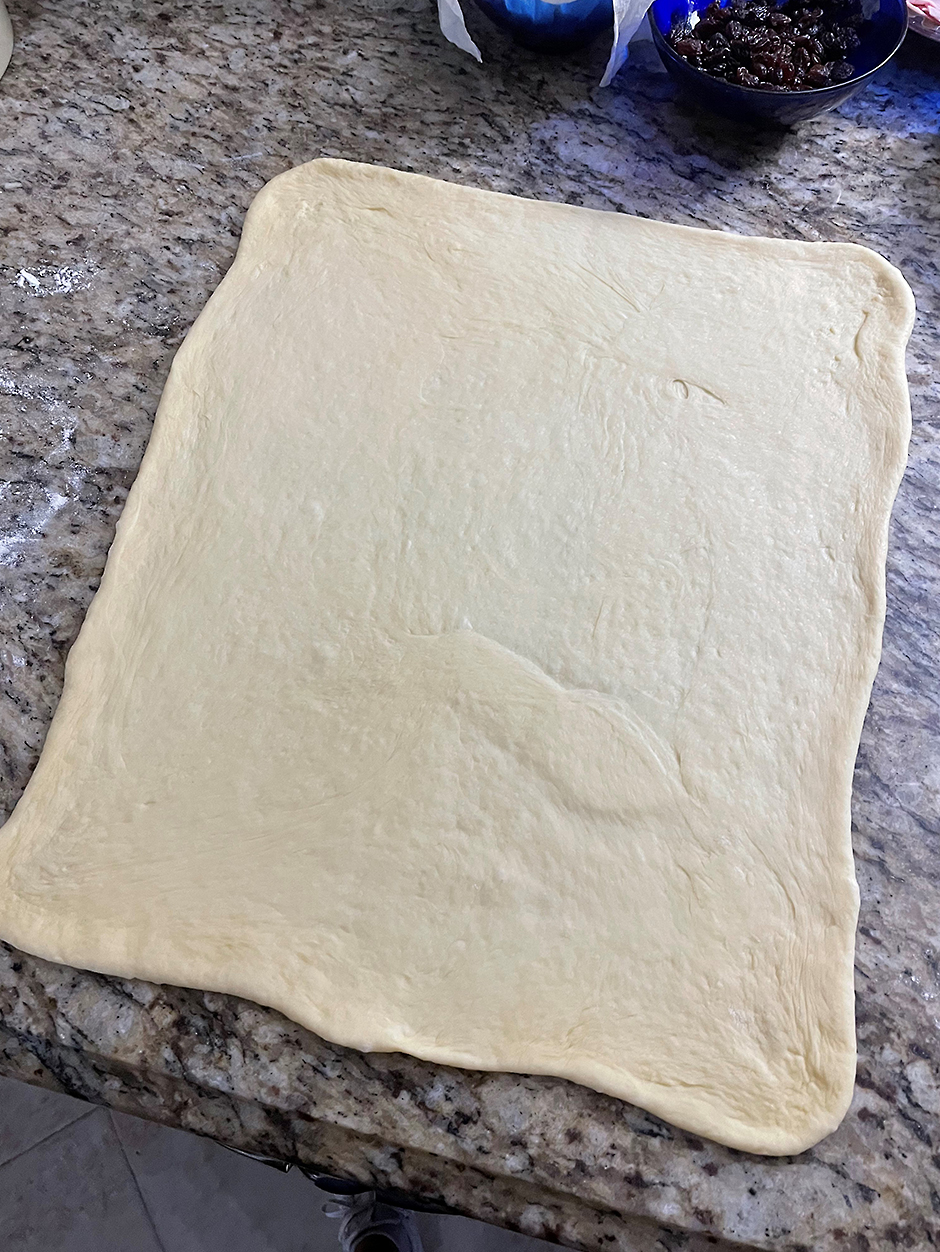
Brush dough with softened butter.
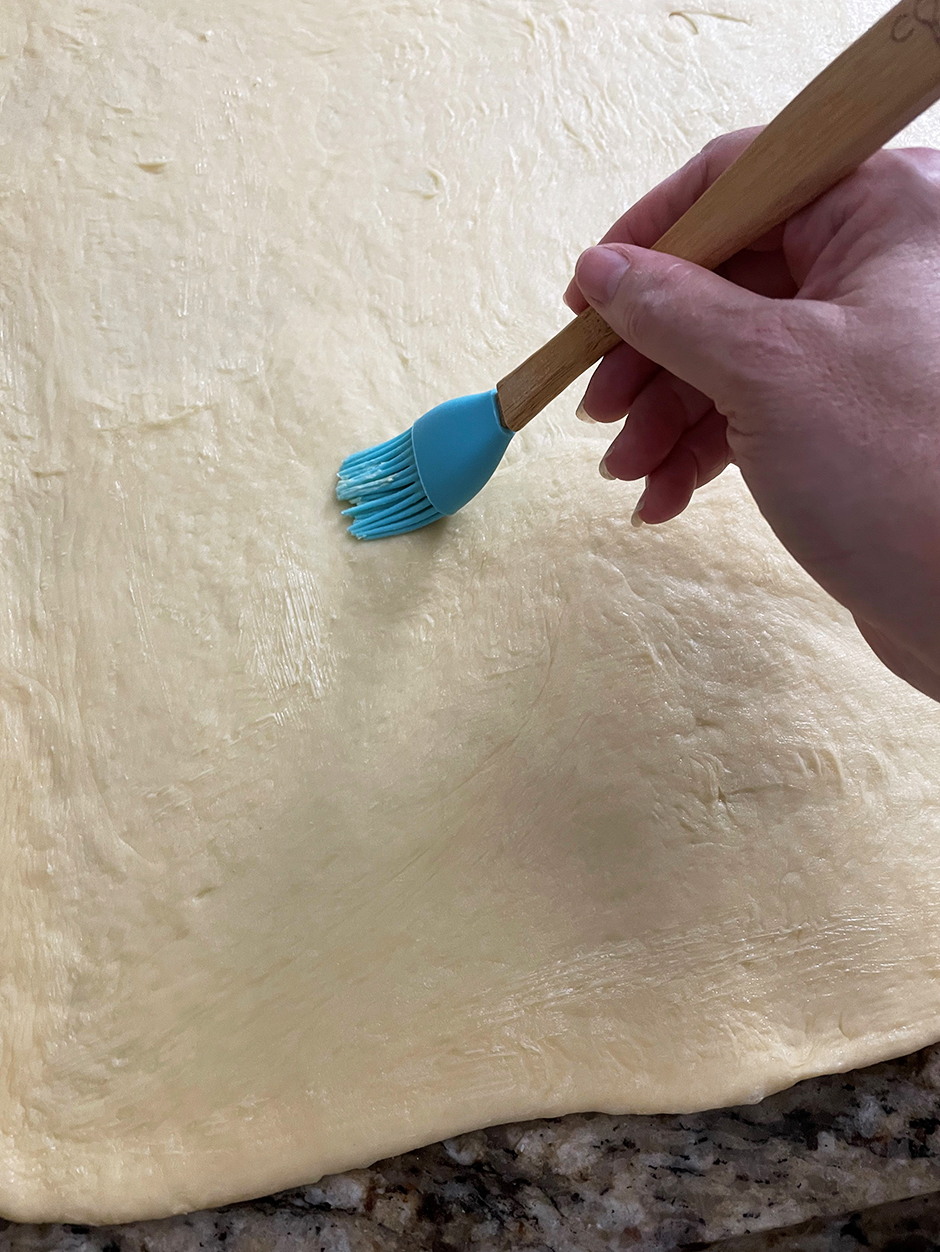
Place a line of whole olives, roll, and then divide the remaining dough, mentally, in thirds.
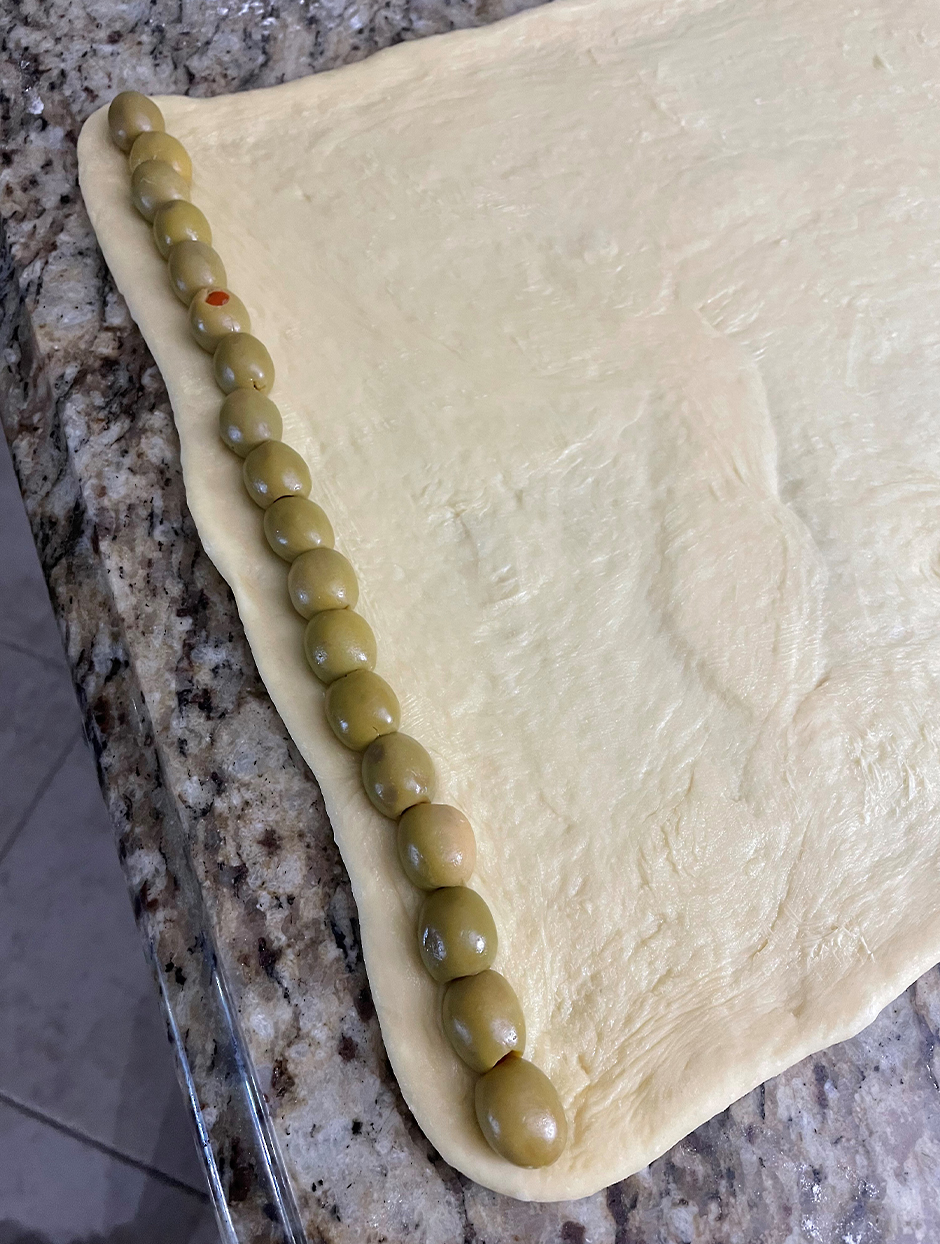
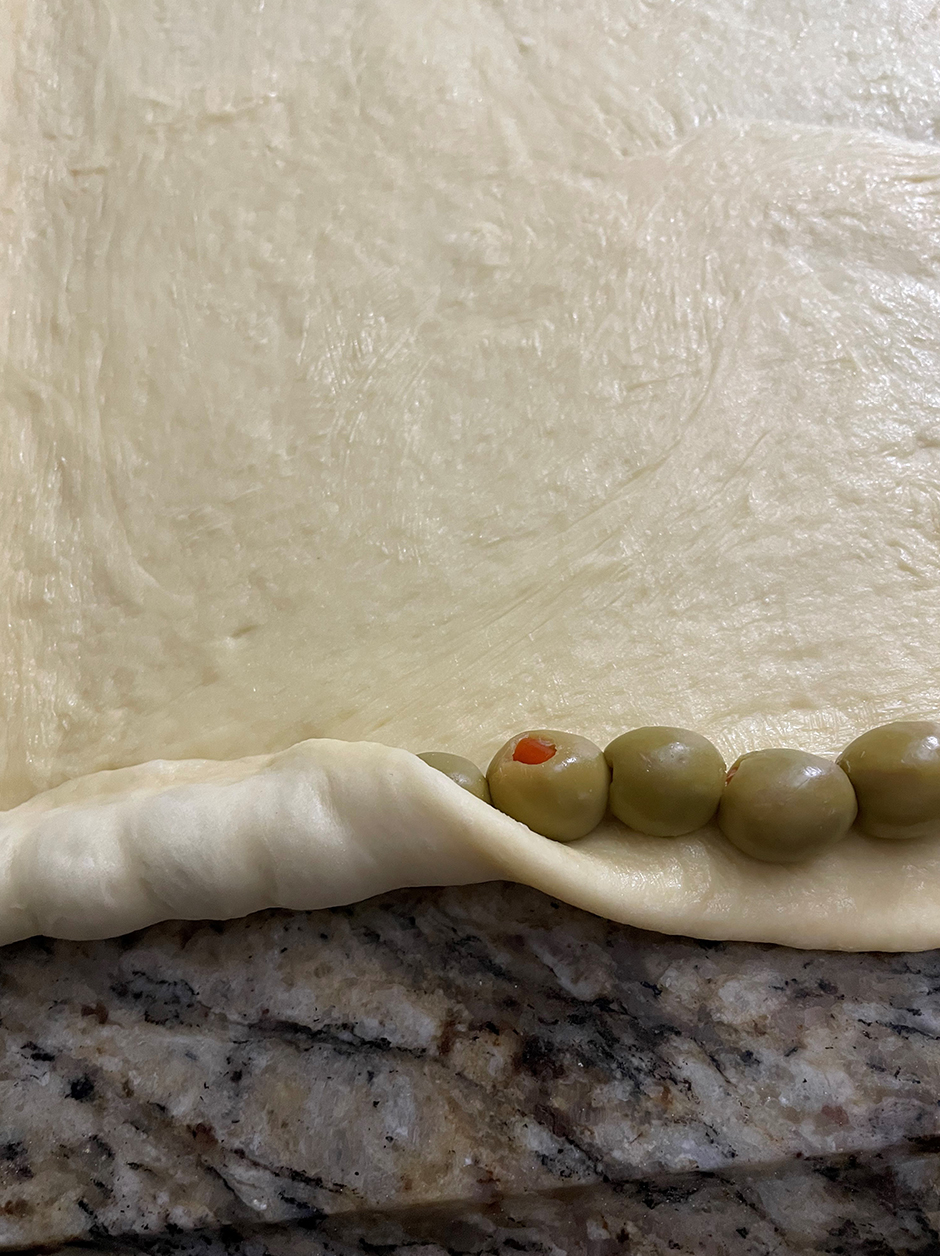
Sprinkle filling in 2/3 of dough as follows:
- ½ cup of raisins, soaked and plumped with 1 tablespoon of hot rum, for each loaf
- ¾ cup of stuffed olives, drained, rinsed, and cut in half, for each loaf
- 1 ¼ pound of sliced ham, cut up, for each loaf
- (optional) slices of bacon
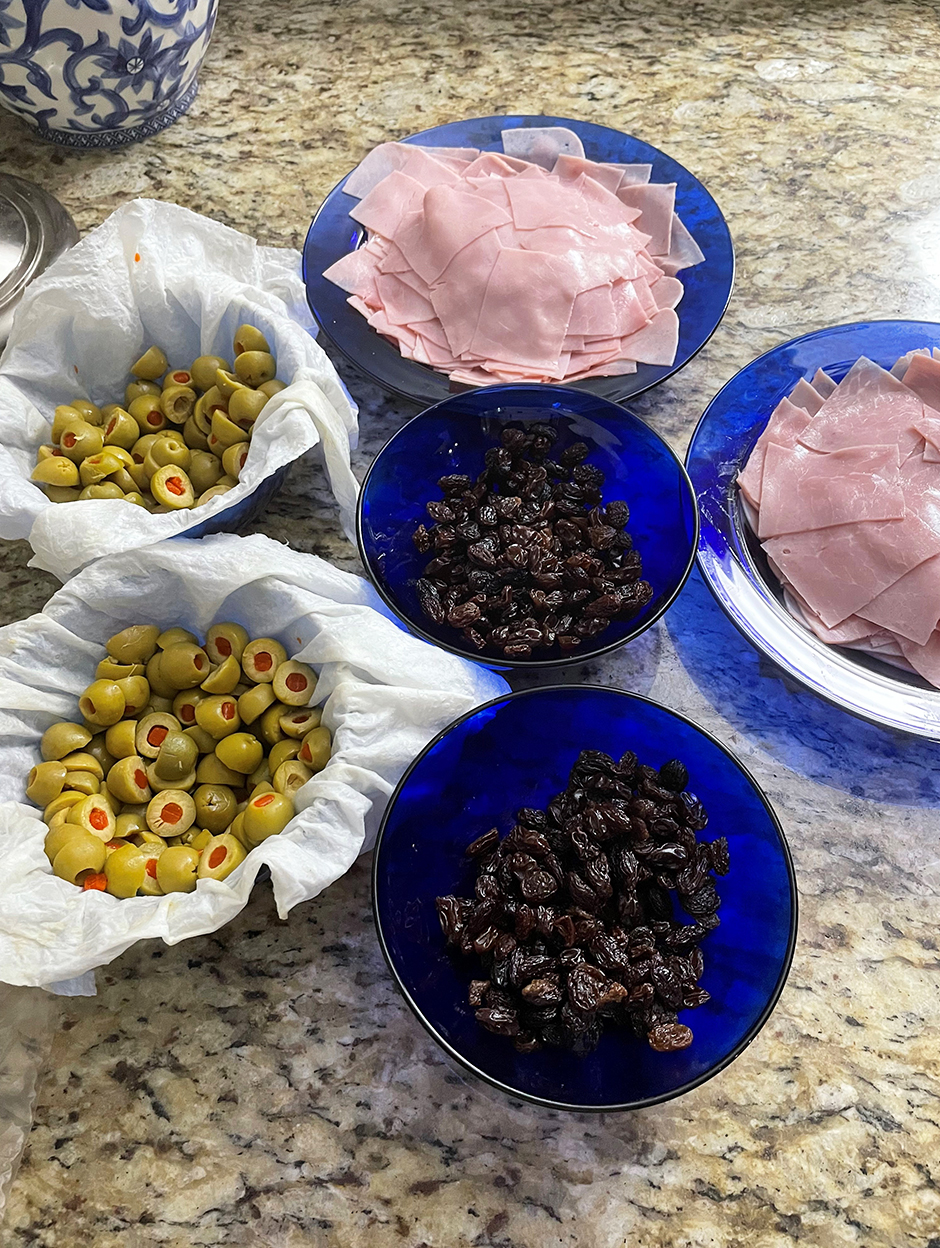
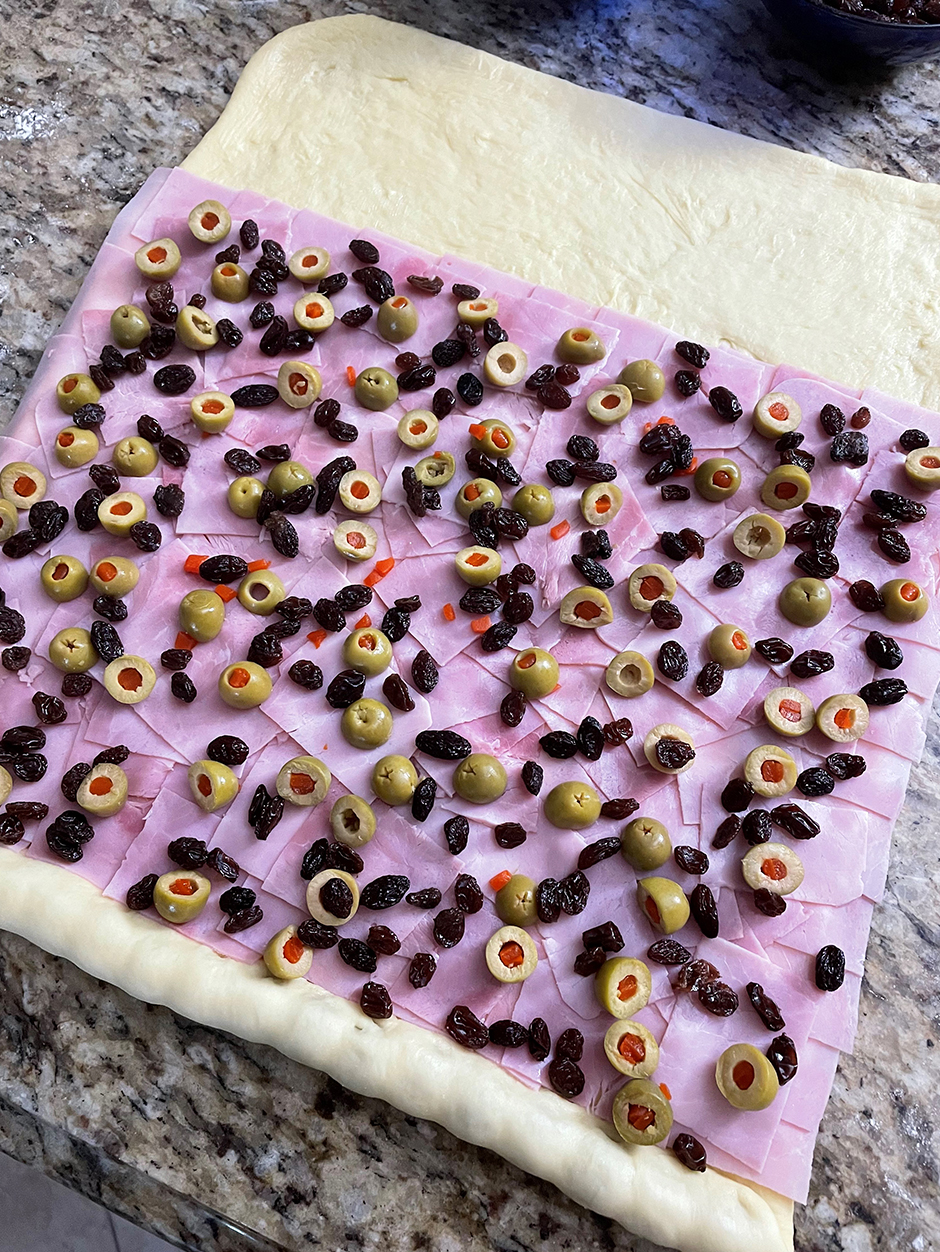
Cut last empty third of dough in strips. Fold/roll up to cut strips. Fold each strip over roll, pinching underneath.
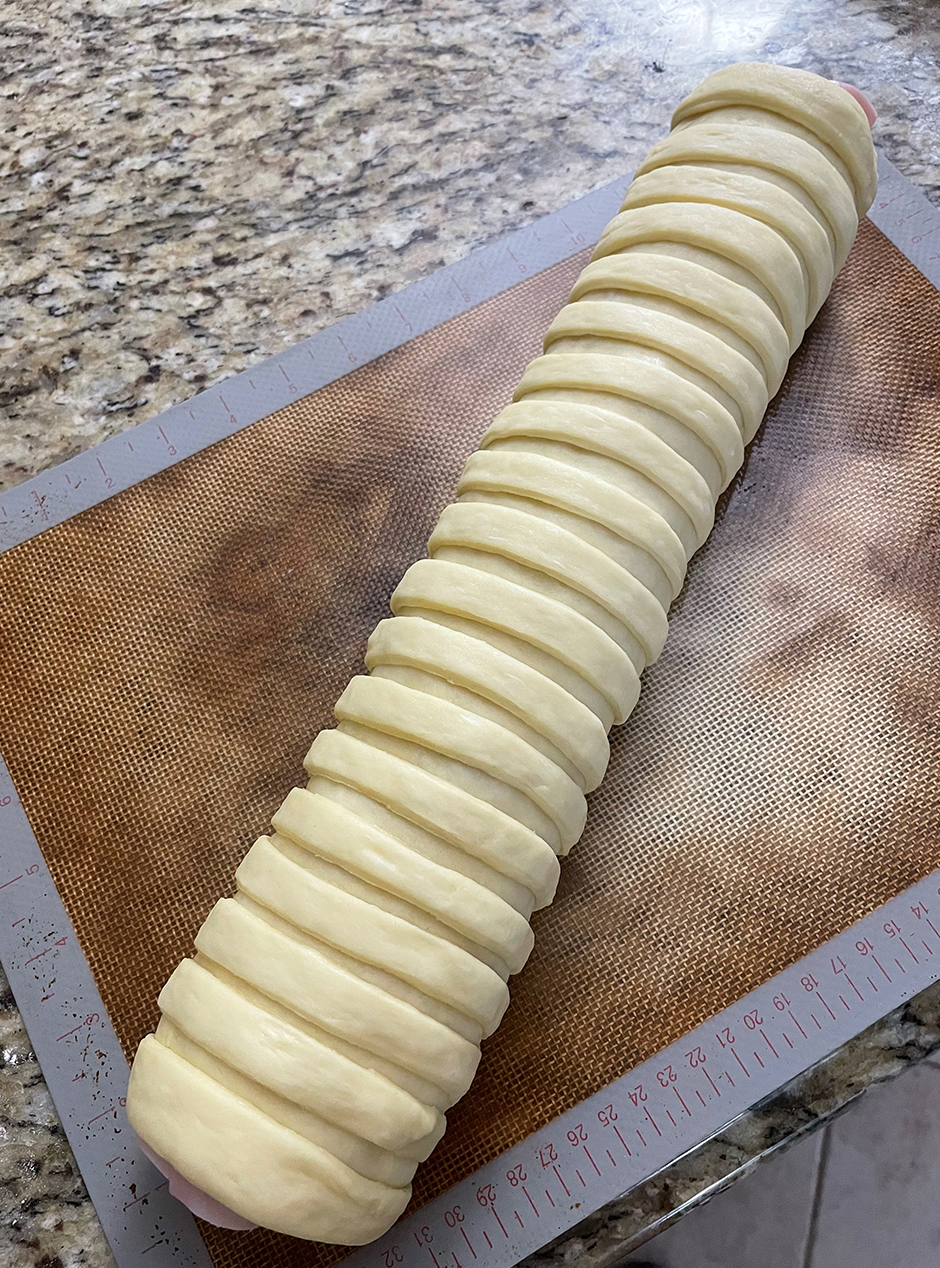
Transfer to pan lined with silpat or parchment paper. Cover with floured plastic wrap (not tight) and let rise for 15-20 minutes. Uncover, poke for steam to be let out, and brush with beaten egg with a pinch of salt.
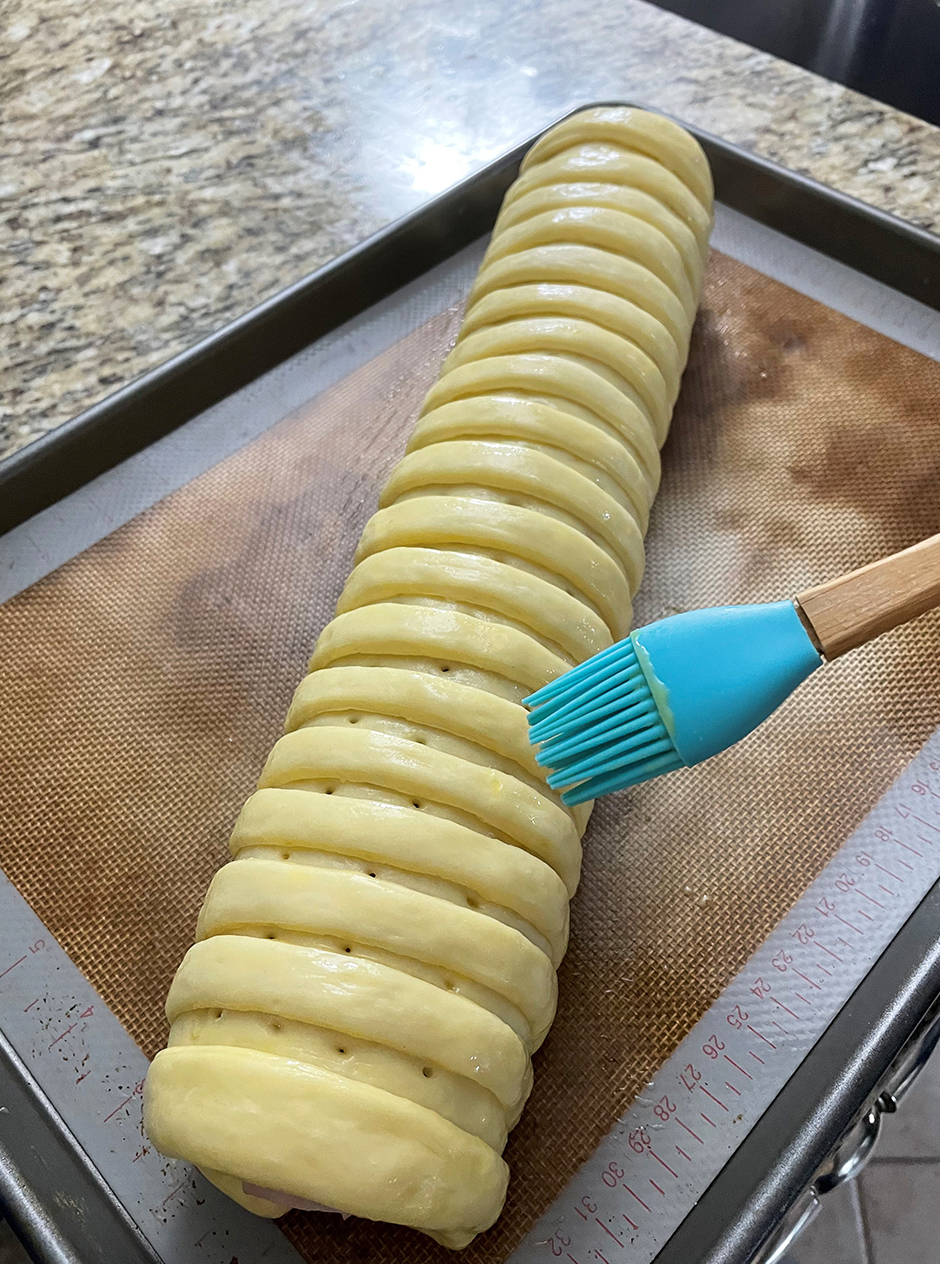
Bake at 325F until golden.
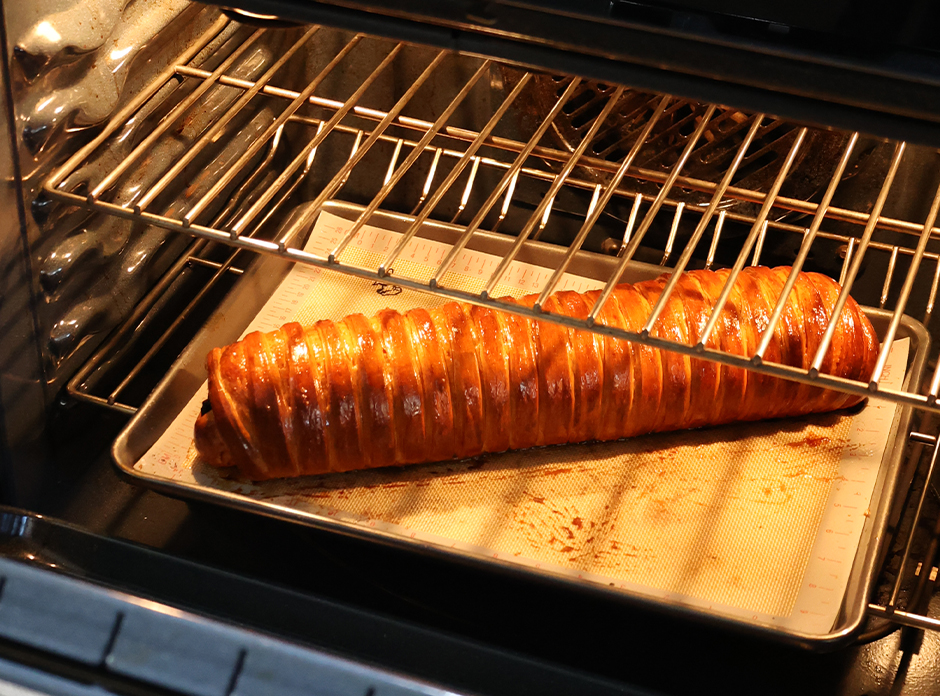
OPTIONAL: Two minutes before the bread is done, brush with:
- 2 tablespoons of brown sugar or panela
- 3 tablespoons of water
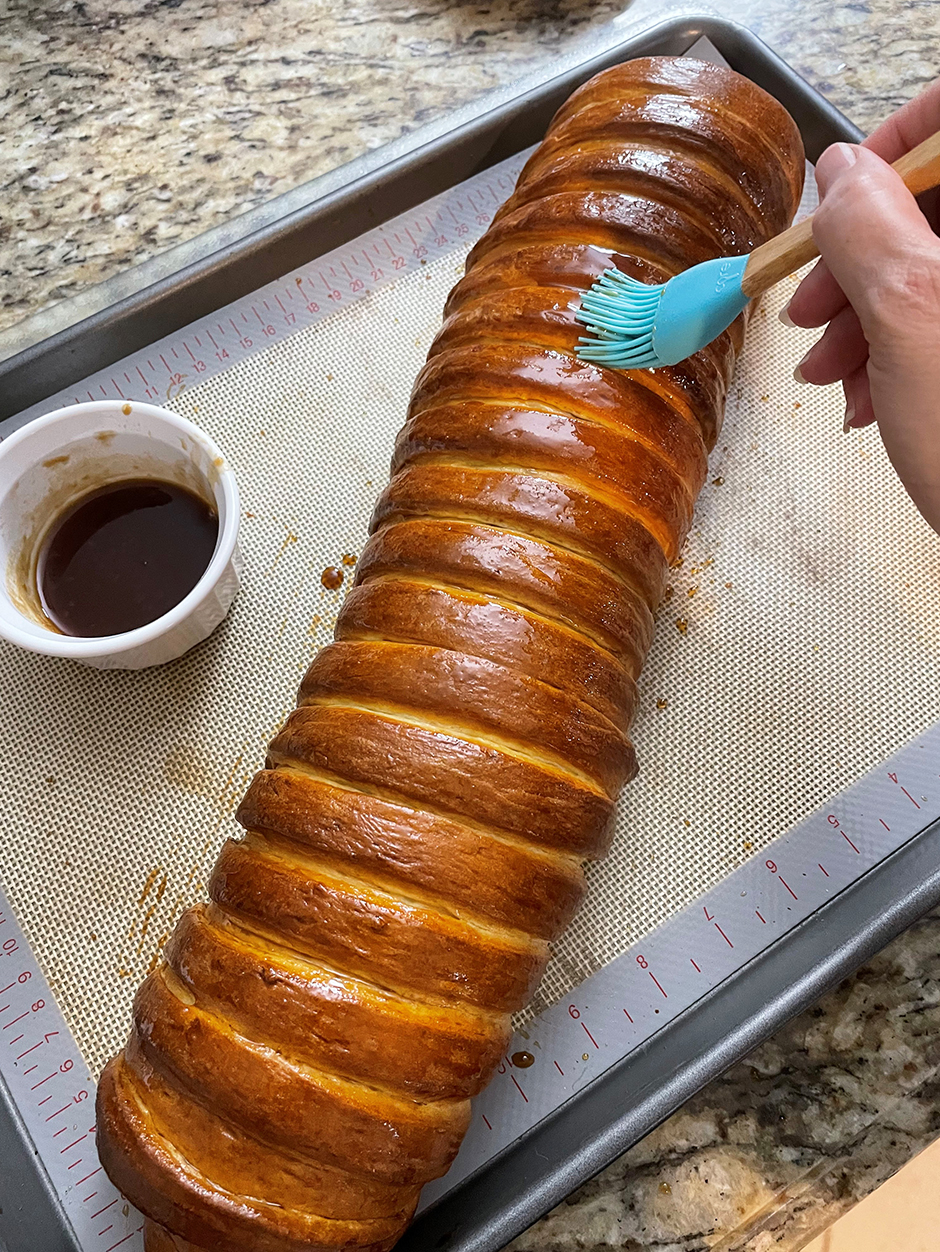
Let mixture to boil for 2 minutes. Let cool.
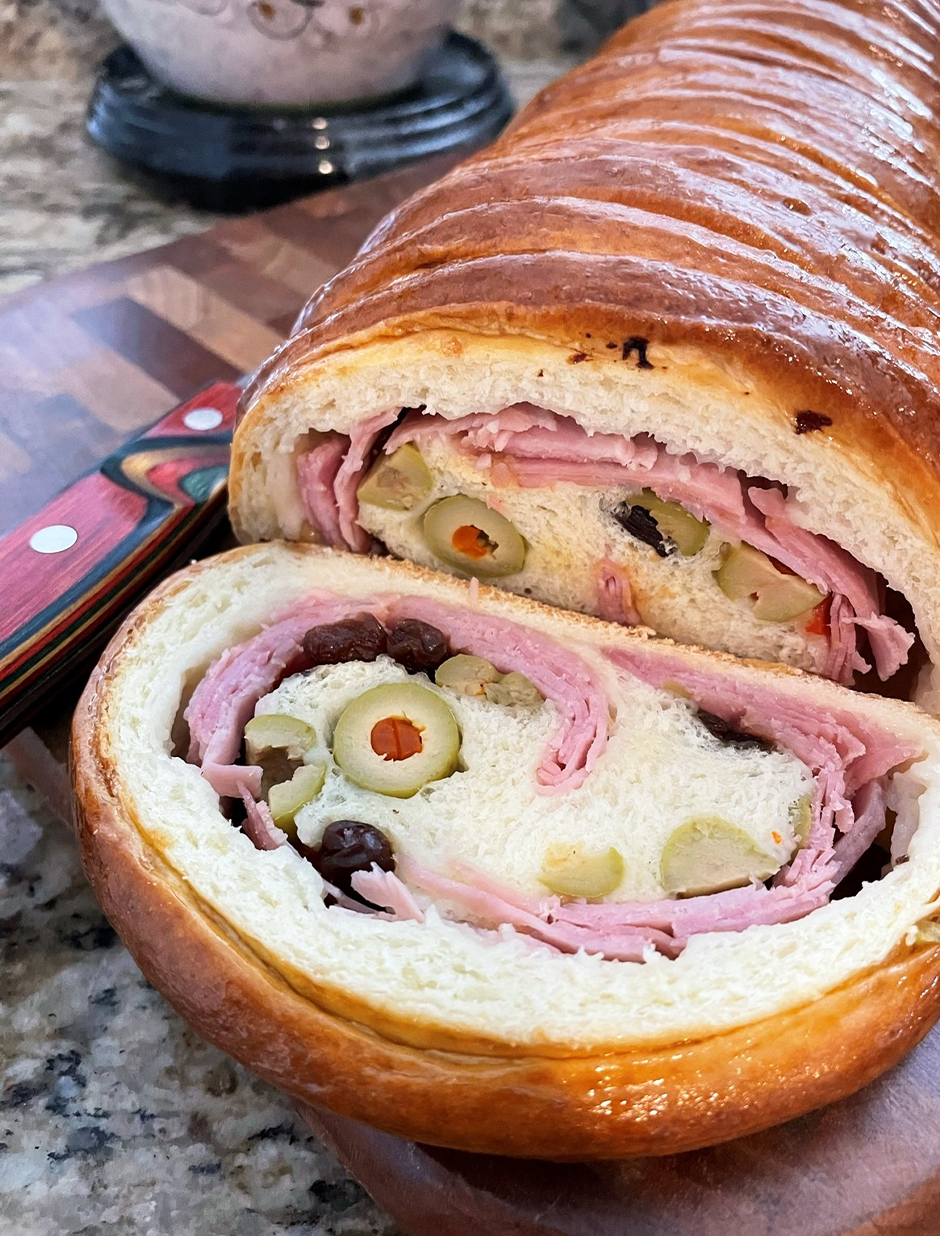
I certainly hope you all had a marvelous and healthy Christmas, and I pray for an equally marvelous and healthy New Year! Thank you so much for following along! I hope you enjoy the video below too!
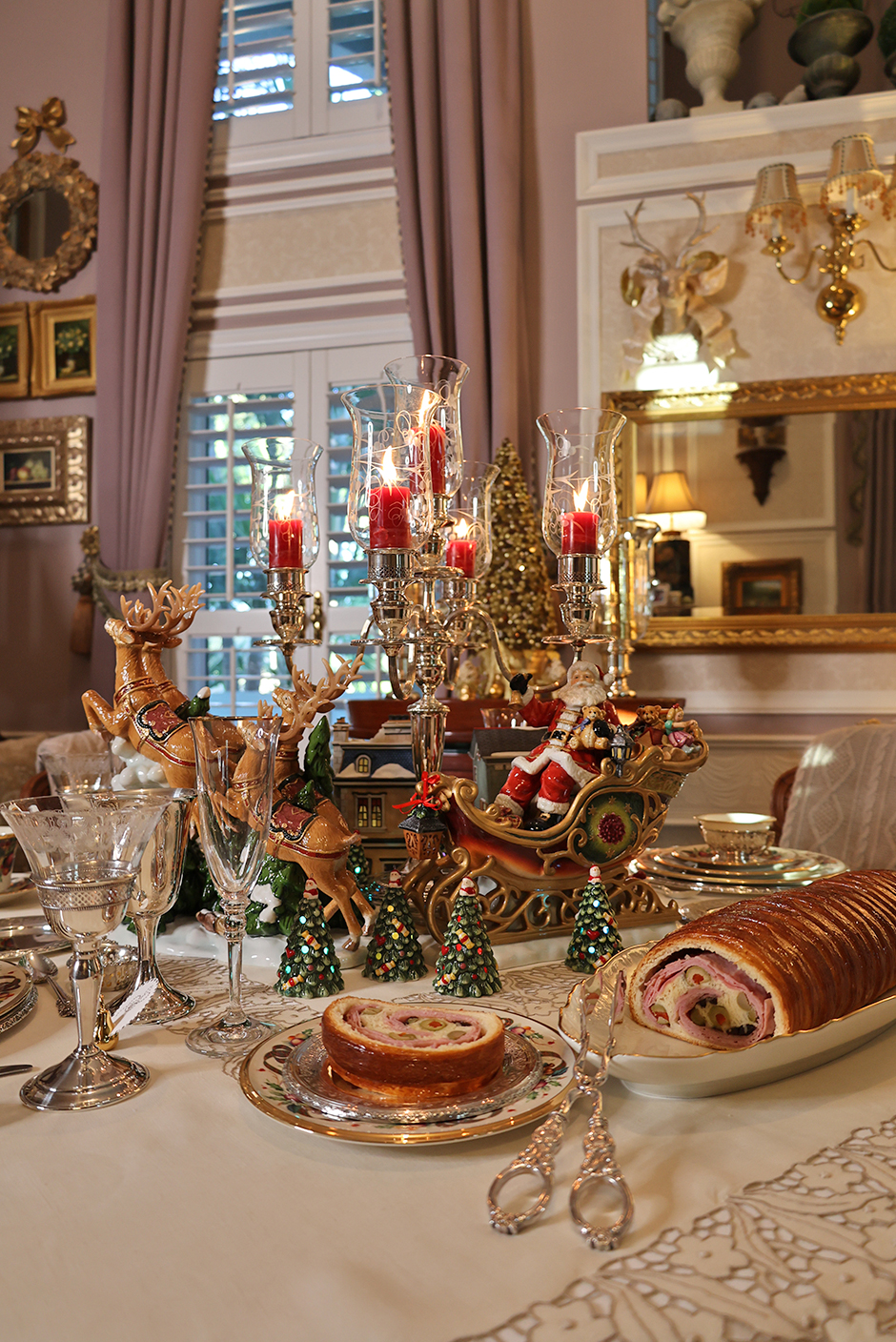
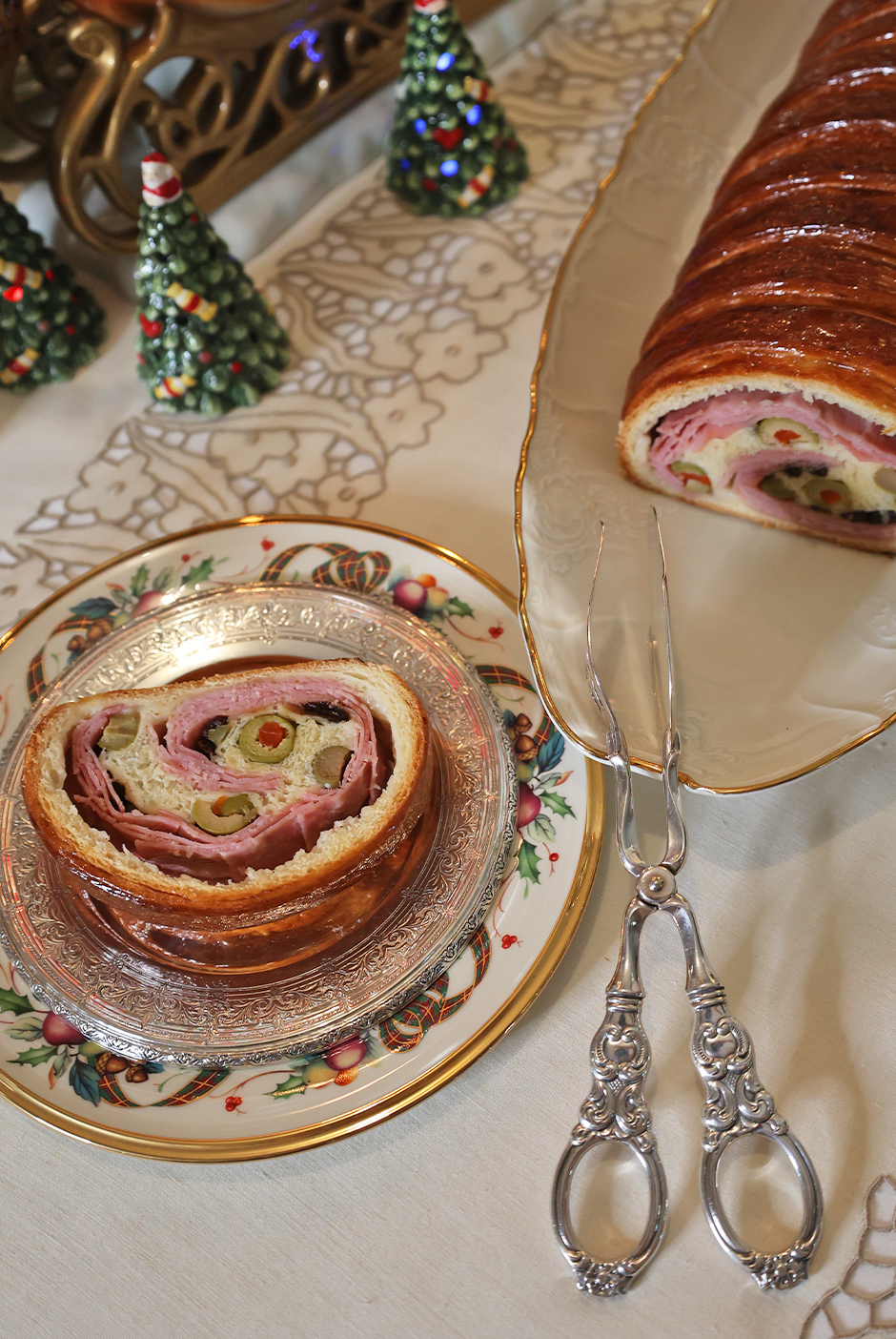
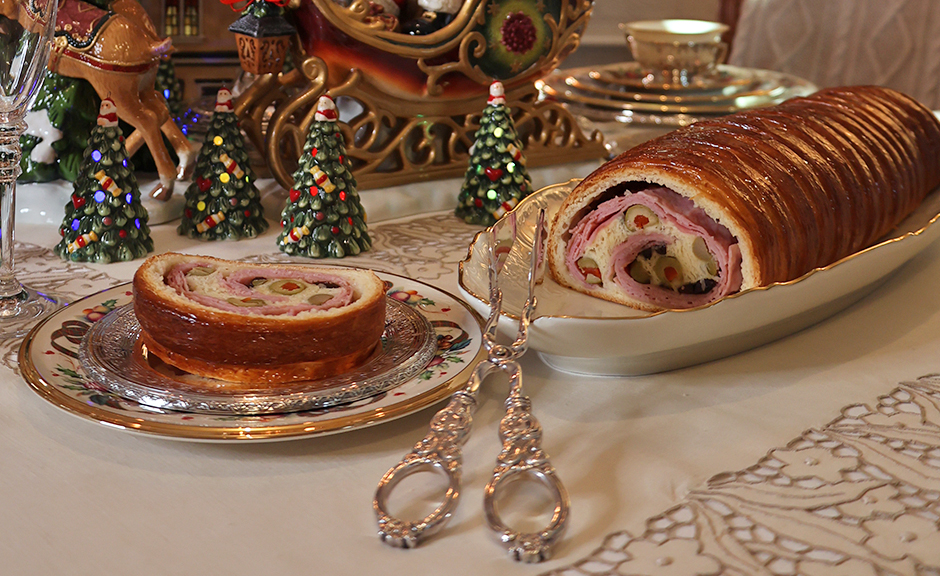
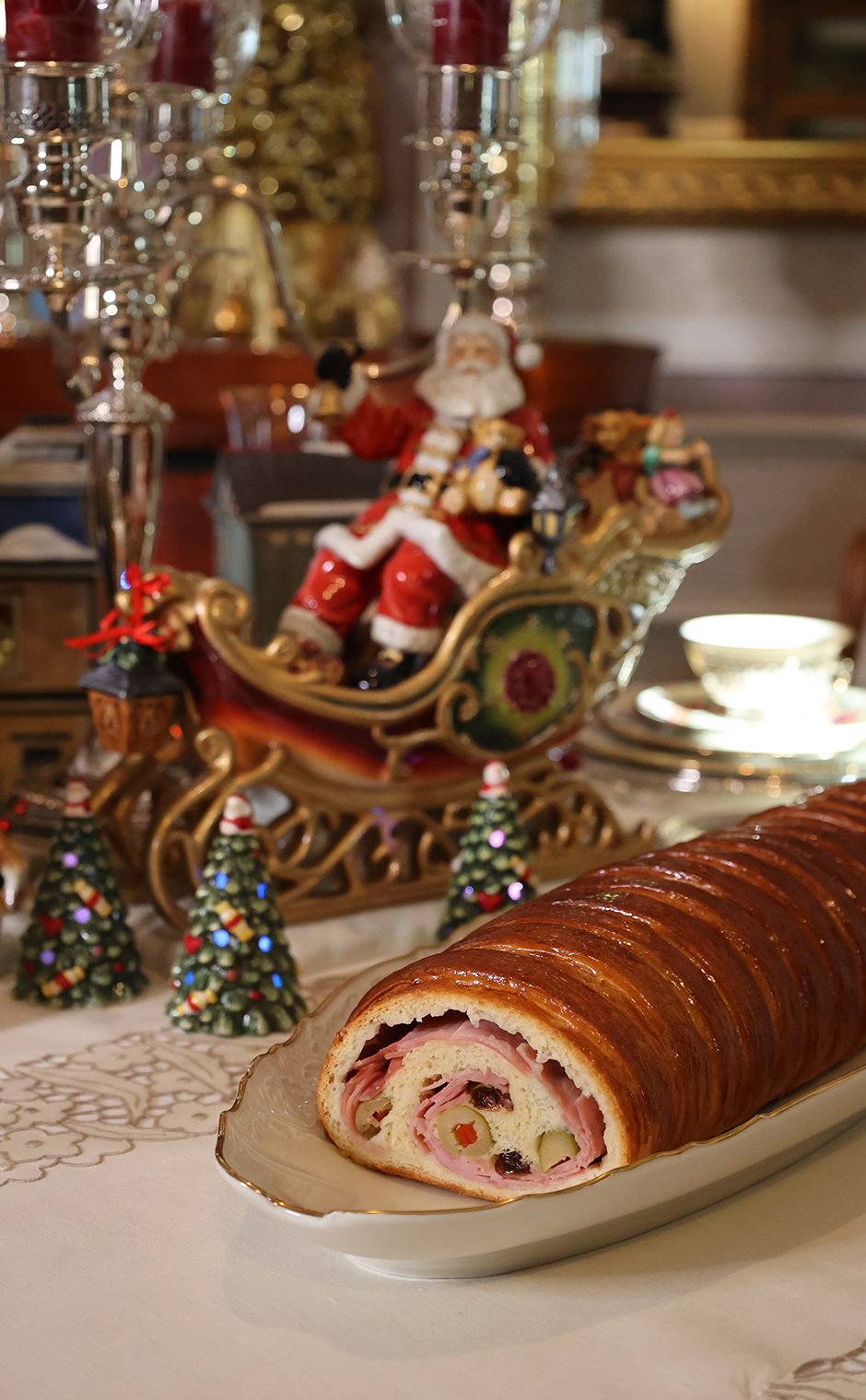
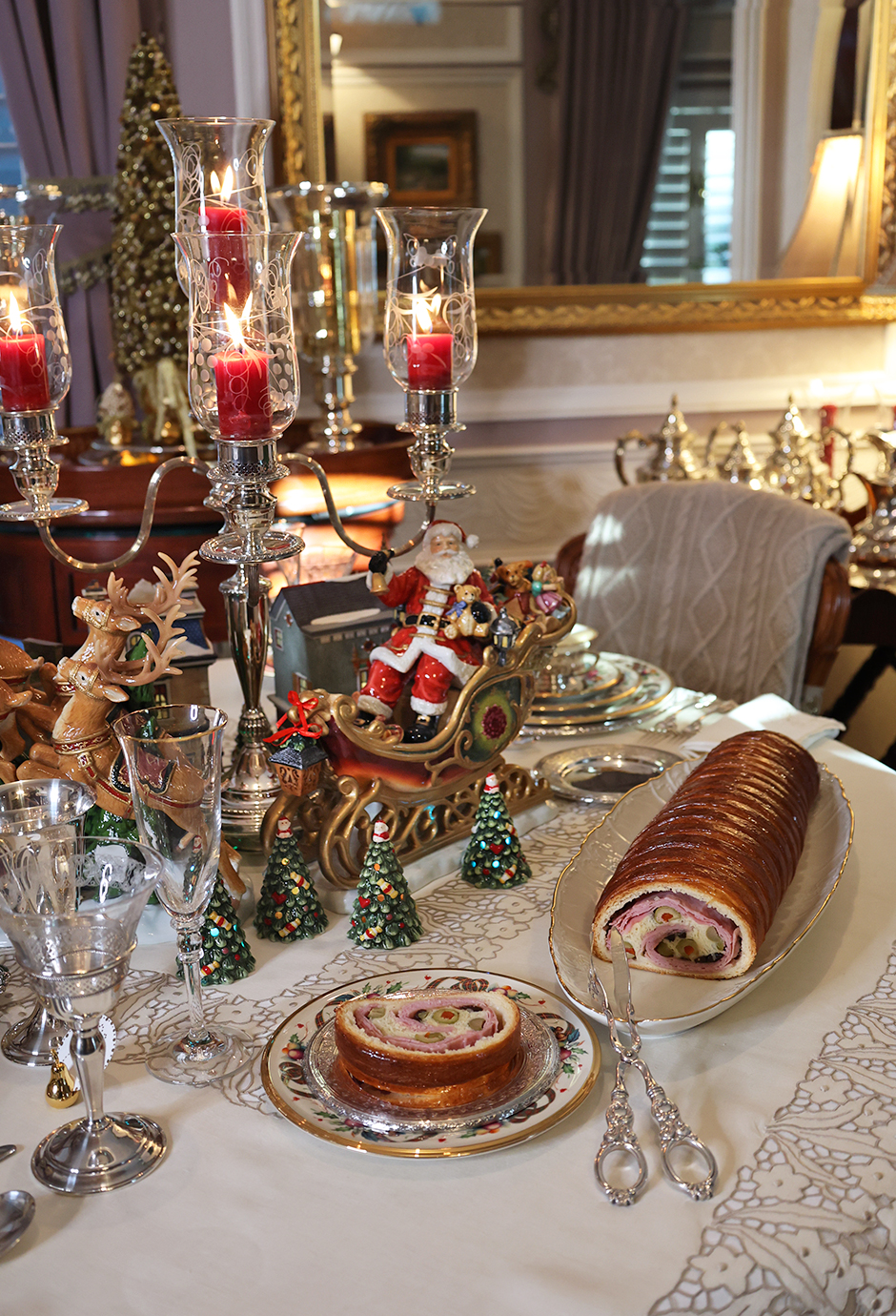
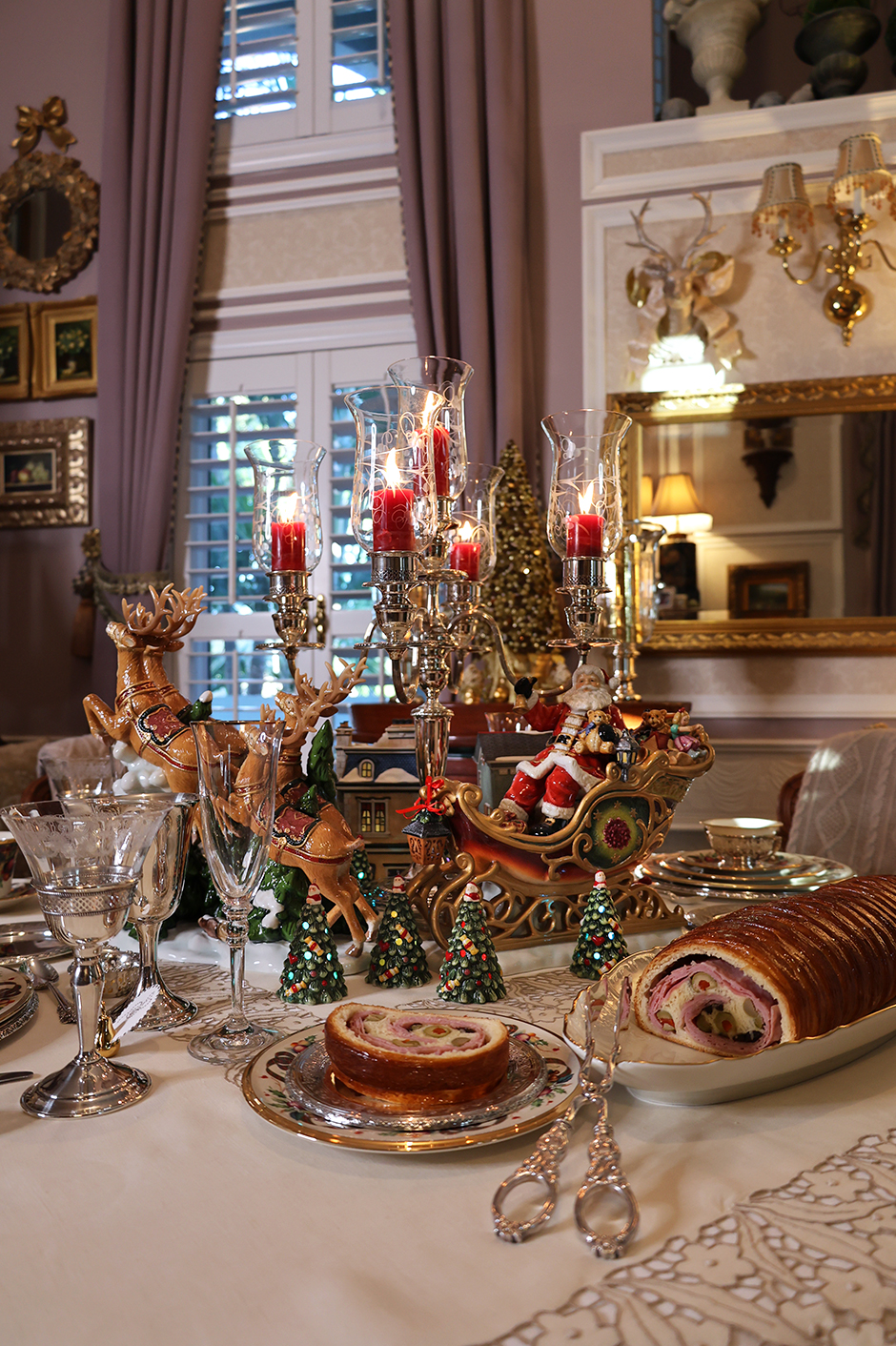
THE SERVING TRAY:
THE CENTERPIECE ELEMENTS:
THE TABLECLOTH AND CHAIRS:
THE STEMWARE:
THE FLATWARE:
THE PLACE SETTINGS:
LET’S KEEP IN TOUCH! Join me on Facebook, Twitter, Instagram & Pinterest









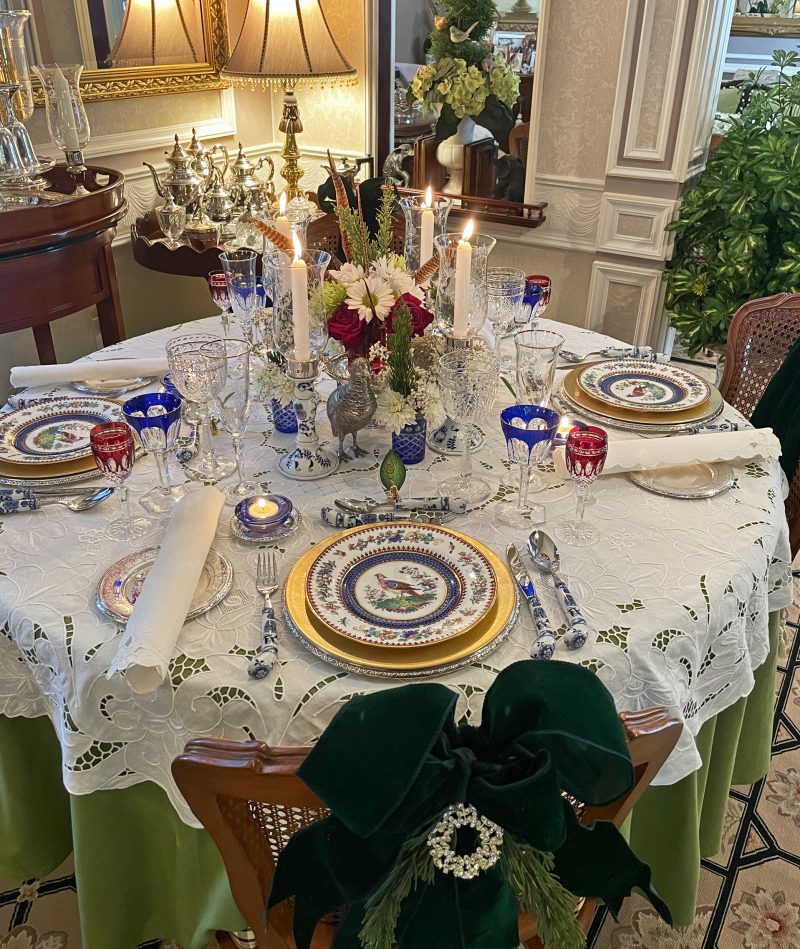



![[🌴💙🗝️ON THE BLOG: Gone Thrifting! 🌴The amazing @churchmousepalmbeach had its “End of the Season Sale” and this is what I wore to go find treasures! 💙 Check all the details and shopping links on the BLOG🗝️🌴💙]
.
.
.
#akeytothearmoire #akeytochicstyle #YSL #SaintLaurent #Gap #NoNameCashmere #stripes #blueandwhite #keds #strawhat #RaymondWeil #EchoNewYork #elegantstyle #classicstyle #ootd #whatiwore #whattowear #howtodress #fashionstyle #streetstyle #influencerespañolaenmiami #luxury #lujo #over50 #over50style #sustainablestyle #personalstyle #outfitinspiration #vintagestyle #influencerover50](https://akeytothearmoire.com/wp-content/plugins/instagram-feed/img/placeholder.png)
